

| Sr. No. | Products | IS Standard | Remark |
|---|---|---|---|
| 1 |  Personal Computing: Personal Computers (CPU with input and output devices) |
ITEW2 | Extended Producer Responsibility (EPR) is a policy approach that holds manufacturers responsible for the entire life cycle of their products, including their end-of-life management. It typically involves the collection, recycling, and proper disposal of electronic waste generated by the products. While EPR regulations vary by country and region, they generally focus on products that have a significant environmental impact and generate a substantial amount of waste, such as electronic devices, including personal computers. If you are a manufacturer or producer of personal computers, you may be required to comply with EPR regulations in your jurisdiction. This could involve:
If you are a manufacturer or producer of mainframes and minicomputers, here are some considerations regarding EPR authorization: |
| 2 | 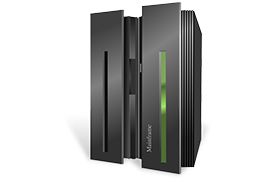 Centralized data processing: Mainframe and Minicomputer |
ITEW1 | 1. Waste Management: EPR typically involves establishing systems and processes for the collection, recycling, and proper disposal of electronic waste generated by your systems. This could include partnering with authorized recycling facilities or implementing take-back programs to ensure the environmentally sound treatment of the waste. 2. Registration: You may be required to register with the relevant regulatory authorities responsible for overseeing EPR programs. This registration ensures that you are recognized as a responsible party for the end-of-life management of your products. 3. Extended Producer Responsibility (EPR) for laptop computers, which are a type of personal computing device, typically involves the responsible management of electronic waste generated by these products. While specific regulations and requirements vary by country and region, here are some general considerations. 4. Reporting and Compliance: EPR programs often have reporting obligations. You may be required to provide data on the quantities of products placed on the market, the amount of electronic waste collected, and the recycling or disposal methods used. Compliance with these reporting requirements is crucial to demonstrate your adherence to EPR regulations.
|
| 3 |  Personal Computing: Laptop Computers(CPU with input and output devices) |
ITEW3 | 1. Registration: As a manufacturer or producer of laptop computers, you may be required to register with the relevant regulatory authorities responsible for overseeing EPR programs. This registration ensures that you are recognized as a responsible party for the end-of-life management of your products. 2. Waste Management: EPR typically involves establishing systems and processes for the collection, recycling, and proper disposal of electronic waste generated by your laptop computers. This may include partnering with authorized recycling facilities or implementing take-back programs to ensure the environmentally sound treatment of the waste. 3. Design for Environment: EPR initiatives often encourage manufacturers to design their products with considerations for recyclability, reparability, and environmental impact. This can include using materials that are easier to recycle, reducing hazardous substances, and designing for easy disassembly. 4. Reporting and Compliance: EPR programs often have reporting obligations. You may be required to provide data on the quantities of laptop computers placed on the market, the amount of electronic waste collected, and the recycling or disposal methods used. Compliance with these reporting requirements is crucial to demonstrate adherence to EPR regulations.
|
| 4 |  Personal Computing: Notebook Computers |
ITEW4 | Are you looking for an EPR Authorization solution to ensure compliance with the E-Waste Management Rules in India? Our EPR Authorization for Personal Computing: Notebook Computers is the perfect solution for you! With our EPR certificate, you can ensure that your organization is fulfilling its responsibility towards the environment while also promoting sustainable production and consumption. Our EPR certification guarantees that your personal computing devices are being disposed of responsibly, reducing the impact on the environment and protecting public health. |
| 5 |  Personal Computing: Notepad Computers |
ITEW5 | If "notepad computers" refer to a specific type of personal computing device that falls under a distinct regulatory category or naming convention, it's best to consult the relevant regulatory authorities or seek legal advice to understand the specific EPR requirements for that particular product in your jurisdiction. EPR regulations are country or region-specific, and they can vary in scope and requirements. To ensure compliance with EPR regulations, it is important to engage with the appropriate regulatory bodies or agencies in your specific jurisdiction, as they will have the most accurate and up-to-date information regarding EPR authorization for personal computing devices. When it comes to personal computing, the Notepad Computer with EPR certification is an ideal choice for anyone who values sustainability. The Extended Producer Responsibility Authorization requires a manufacturer to take responsibility for the product's entire lifecycle, from design to disposal. By choosing a computer with this certification, you are ensuring that you are doing your part to create a more environmentally responsible world. The Notepad Computers with EPR authorization in India are energy-efficient, reliable, and designed with durability in mind, making them a smart choice for you and the planet. Invest in a computer that has a low environmental footprint, and make the world a better place, one purchase at a time. |
| 6 | 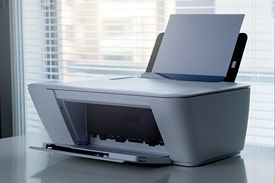 Printers including cartridges |
ITEW6 | As a printer manufacturer or importer, the EPR authorization is not just a legal obligation but also a social responsibility. Enhance your business's environmental reputation with an EPR certification and play a role in building a sustainable India. With the EPR authorization for printers and cartridges, you can streamline your waste management processes and guarantee safe and eco-friendly disposal of your products. Contact brand liaison for EPR certification now! Extended Producer Responsibility (EPR) authorization for printers and cartridges generally involves the responsible management of electronic waste generated by these products. Here are some considerations for manufacturers or producers of printers and cartridges to ensure compliance with EPR regulations:
|
| 7 |  Copying equipment |
ITEW7 | The EPR Authorization for Copying Equipment is a crucial certification required by the Central Pollution Control Board in India. It ensures that the electronic waste generated by your organization's copying equipment is managed and disposed of responsibly. Our team of experts can guide you through the process of obtaining an EPR certificate, so you can ensure environmental compliance and protect your organization's reputation. Extended Producer Responsibility (EPR) authorization for copying equipment typically involves the responsible management of electronic waste generated by these products. While specific regulations and requirements may vary by country and region, here are some general considerations:
Extended Producer Responsibility (EPR) authorization for electrical and electronic typewriters typically involves the responsible management of electronic waste generated by these products. Here are some general considerations for manufacturers or producers of electrical and electronic typewriters: |
| 8 |  Electrical and electronic typewriters |
ITEW8 |
2. Waste Management: EPR typically involves establishing systems and processes for the collection, recycling, and proper disposal of electronic waste generated by electrical and electronic typewriters. This may include partnering with authorized recycling facilities or implementing take-back programs to ensure the environmentally sound treatment of the waste. 3. Design for Environment: EPR initiatives often encourage manufacturers to design their products with considerations for recyclability, reparability, and environmental impact. This can include using materials that are easier to recycle, reducing hazardous substances, and designing for easy disassembly. Reporting and Compliance: EPR programs often have reporting obligations. Manufacturers may be required to provide data on the quantities of electrical and electronic typewriters placed on the market, the amount of electronic waste collected, and the recycling or disposal methods used. Compliance with these reporting requirements is crucial to demonstrate adherence to EPR regulations. |
| 9 |  User terminals and systems |
ITEW9 | EPR Authorization for User terminals and systems is an essential requirement for businesses in India that generate e-waste. Our EPR Authorization services ensure that your company complies with the regulations laid out by the Central Pollution Control Board (CPCB). We offer EPR Certificate and EPR Certification services to help you manage your e-waste in an environmentally sustainable manner. Our experts will guide you through the process and provide you with all the necessary documentation. Extended Producer Responsibility (EPR) authorization for electrical and electronic typewriters typically involves the responsible management of electronic waste generated by these products. Here are some general considerations for manufacturers or producers of electrical and electronic typewriters:
|
| 10 |  Facsimile |
ITEW10 | Achieving EPR compliance in India can be challenging, but our EPR Authorization for Facsimile solution makes it easy. Our experienced team will take care of all the paperwork and certification requirements, ensuring you meet all the necessary standards for responsible e-waste management. Trust us to keep your business on track, and to help protect the environment for generations to come.
The Extended Producer's Responsibility Authorization for Facsimile is a mandatory certification that demonstrates your company's environmental responsibility. With the EPR Authorization India, you will showcase your compliance with the latest regulations for electronic waste disposal. Our expert team will guide you through the entire certification process and ensure that your company enjoys the many benefits of becoming an environmentally responsible organization. |
| 11 |  Telex |
ITEW11 | EPR Authorization for Telex is a process that is required for the import and export of telex equipment in India. The process is overseen by the Bureau of Indian Standards (BIS) and is designed to ensure that telex equipment meets certain safety and quality standards. To obtain EPR Authorization for Telex, a manufacturer or importer must first apply to the BIS. The application must include a variety of documentation, including the product's technical specifications, test reports, and a certificate of conformity. The BIS will then review the application and, if it is approved, will issue an EPR Authorization Certificate. The EPR Authorization Certificate is valid for a period of five years. After the five-year period has expired, the manufacturer or importer must reapply for EPR Authorization. The EPR Authorization process is designed to protect consumers from the sale of unsafe or substandard telex equipment. By requiring manufacturers and importers to obtain EPR Authorization, the BIS is ensuring that telex equipment sold in India meets certain minimum safety and quality standards. |
| 12 |  Pay telephones |
ITEW13 | EPR Authorization for Pay telephones is a process that is required for the import and export of pay telephones in India. The process is overseen by the Bureau of Indian Standards (BIS) and is designed to ensure that pay telephones meet certain safety and quality standards. To obtain EPR Authorization for Pay telephones, a manufacturer or importer must first apply to the BIS. The application must include a variety of documentation, including the product's technical specifications, test reports, and a certificate of conformity. The BIS will then review the application and, if it is approved, will issue an EPR Authorization Certificate. The EPR Authorization Certificate is valid for a period of five years. After the five-year period has expired, the manufacturer or importer must reapply for EPR Authorization. The EPR Authorization process is designed to protect consumers from the sale of unsafe or substandard pay telephones. By requiring manufacturers and importers to obtain EPR Authorization, the BIS is ensuring that pay telephones sold in India meet certain minimum safety and quality standards. |
| 13 |  Cordless telephones |
ITEW14 | EPR (Extended Producer Responsibility) authorization for cordless telephones refers to the responsibility placed on manufacturers or producers of cordless telephones to manage the entire lifecycle of their products, including their environmental impact during production, use, and disposal. While the specific requirements and processes for EPR authorization can vary depending on the jurisdiction, here are some general steps that manufacturers or producers of cordless telephones may follow:
|
| 14 |  Cellular telephones |
ITEW15 | EPR Authorization for Cellular telephones is a process that is required for the import and export of cellular telephones in India. The process is overseen by the Central Pollution Control Board (CPCB) and is designed to ensure that cellular telephones meet certain safety and quality standards. To obtain EPR Authorization for Cellular telephones, a manufacturer or importer must first apply to the CPCB. The application must include a variety of documentation, including the product's technical specifications, test reports, and a certificate of conformity. The CPCB will then review the application and, if it is approved, will issue an EPR Authorization Certificate. The EPR Authorization Certificate is valid for a period of five years. After the five-year period has expired, the manufacturer or importer must reapply for EPR Authorization. The EPR Authorization process is designed to protect consumers from the sale of unsafe or substandard cellular telephones. By requiring manufacturers and importers to obtain EPR Authorization, the CPCB is ensuring that cellular telephones sold in India meet certain minimum safety and quality standards. |
| 15 |  Answering System |
ITEW16 | EPR Authorization for Answering System is a process that is required for the import and export of answering systems in India. The process is overseen by the Central Pollution Control Board (CPCB) and is designed to ensure that answering systems meet certain safety and quality standards. To obtain EPR Authorization for Answering System, a manufacturer or importer must first apply to the CPCB. The application must include a variety of documentation, including the product's technical specifications, test reports, and a certificate of conformity. The CPCB will then review the application and, if it is approved, will issue an EPR Authorization Certificate. The EPR Authorization Certificate is valid for a period of five years. After the five-year period has expired, the manufacturer or importer must reapply for EPR Authorization. The EPR Authorization process is designed to protect consumers from the sale of unsafe or substandard answering systems. By requiring manufacturers and importers to obtain EPR Authorization, the CPCB is ensuring that answering systems sold in India meet certain minimum safety and quality standards. |
| 16 |  Telephone |
ITEW12 | EPR (Extended Producer Responsibility) authorization for telephones generally refers to the responsibility placed on manufacturers or producers of telephones to manage the entire lifecycle of their products, including their environmental impact during production, use, and disposal. While the specific requirements and processes for EPR authorization can vary depending on the jurisdiction, here are some general steps that manufacturers or producers of telephones may follow: 1. Research applicable regulations: Familiarize yourself with the environmental regulations and policies related to electronic products, waste management, and extended producer responsibility in your jurisdiction. This could involve consulting government agencies responsible for environmental protection or waste management. 2. Compliance assessment: Assess the specific environmental requirements and obligations for telephones. This may include aspects such as materials used, energy efficiency, hazardous substance restrictions, recyclability, and proper labeling. 3. Implementation of environmental measures: Develop and implement practices that align with environmental regulations and demonstrate your commitment to environmental responsibility. This could involve using environmentally-friendly materials, designing for easy disassembly and recycling, reducing energy consumption, and implementing sustainable manufacturing processes. 4. Reporting and documentation: Maintain accurate records and documentation of your compliance with environmental regulations. This may include providing periodic reports to the regulatory authorities, demonstrating compliance with specific standards, and keeping track of the environmental impact of your telephones. Compliance verification and audits: Some jurisdictions may require periodic verification or audits to ensure compliance with environmental regulations. This can involve inspections or assessments by authorized third-party organizations or government agencies. |
| 17 |  Products or equipment of transmitting sound, images or other information by telecommunications |
ITEW17 | EPR generally refers to a policy approach where producers take responsibility for the entire lifecycle of their products, including their disposal and recycling. While EPR frameworks may exist for certain electronic products in some jurisdictions, they may not be specific to the telecommunications sector or the transmission of sound, images, or information. However, it's important to note that regulations and requirements may vary across jurisdictions and can change over time. Therefore, it is recommended to consult the relevant regulatory authorities or environmental agencies in your specific region for the most accurate and up-to-date information. They can provide specific guidance on any EPR requirements or environmental regulations that apply to the telecommunications sector, including products or equipment related to transmitting sound, images, or other information. They can also advise on any necessary authorizations, compliance processes, or reporting obligations that may be applicable to your situation. By reaching out to the appropriate regulatory authorities or environmental agencies, you can obtain specific guidance tailored to your jurisdiction and stay informed about any EPR-related requirements for telecommunications products or equipment. |
| 18 |  BTS (all components excluding structure of tower) |
ITEW18 | EPR Authorization for BTS (all components excluding structure of tower) is a process that is required for the import and export of base transceiver stations (BTS) in India. The process is overseen by the Bureau of Indian Standards (BIS) and is designed to ensure that BTS meet certain safety and quality standards. To obtain EPR Authorization for BTS (all components excluding structure of tower), a manufacturer or importer must first apply to the BIS. The application must include a variety of documentation, including the product's technical specifications, test reports, and a certificate of conformity. The BIS will then review the application and, if it is approved, will issue an EPR Authorization Certificate. The EPR Authorization Certificate is valid for a period of five years. After the five-year period has expired, the manufacturer or importer must reapply for EPR Authorization. The EPR Authorization process is designed to protect consumers from the sale of unsafe or substandard BTS. By requiring manufacturers and importers to obtain EPR Authorization, the BIS is ensuring that BTS sold in India meet certain minimum safety and quality standards. |
| 19 |  Tablets, I-PAD |
ITEW19 | EPR stands for Extended Producer's Responsibility. It is a policy whereby producers are held responsible for the environmental impact of their products, even after they have been sold. In India, EPR is mandatory for all electronic and electrical products, including tablets and iPads. To obtain EPR authorization for tablets and iPads in India, manufacturers and importers must submit an application to the Central Pollution Control Board (CPCB). The application must include the following information:
|
| 20 |  Phablets |
ITEW20 | EPR stands for Extended Producer's Responsibility. It is a policy whereby producers are held responsible for the environmental impact of their products, even after they have been sold. In India, EPR is mandatory for all electronic and electrical products, including phablets. A phablet is a mobile device combining or straddling the size formats of smart phones and tablets. It typically has a screen size of 5.5 inches or larger. To obtain EPR authorization for phablets in India, manufacturers and importers must submit an application to the Central Pollution Control Board (CPCB). The application must include the following information:
|
| 21 |  Scanners |
ITEW21 | EPR stands for Extended Producer Responsibility. It is a policy whereby producers are held responsible for the environmental impact of their products, even after they have been sold. In India, EPR is mandatory for all electronic and electrical products, including scanners. To obtain EPR authorization for scanners in India, manufacturers and importers must submit an application to the Central Pollution Control Board (CPCB). The application must include the following information:
The CPCB will review the application and, if it is approved, will issue an EPR authorization certificate. This certificate will allow the manufacturer or importer to sell their scanners in India. |
| 22 | 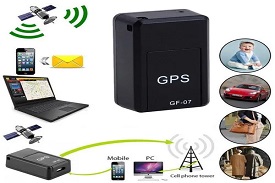 GPS |
ITEW23 | EPR generally refers to a policy approach where producers take responsibility for the entire lifecycle of their products, including their disposal and recycling. While EPR frameworks may exist for certain electronic products in some jurisdictions, they may not be specific to GPS devices. To ensure compliance with environmental regulations and responsible management of GPS devices, you should consider the following general steps:
|
| 23 |  UPS |
ITEW24 | EPR generally refers to a policy approach where producers take responsibility for the entire lifecycle of their products, including their disposal and recycling. While EPR frameworks may exist for certain electronic products in some jurisdictions, they may not be specific to UPS devices. To ensure compliance with environmental regulations and responsible management of UPS devices, you should consider the following general steps: 1. Research applicable regulations: Familiarize yourself with the environmental regulations and policies related to electronic products, waste management, and extended producer responsibility in your jurisdiction. This could involve consulting government agencies responsible for environmental protection or waste management. 2. Compliance assessment: Assess the specific environmental requirements and obligations for UPS devices within your jurisdiction. This may include aspects such as materials used, energy efficiency, hazardous substance restrictions, recyclability, and proper labeling. 3. Implementation of environmental measures: Develop and implement practices that align with environmental regulations and demonstrate your commitment to environmental responsibility. This could involve using environmentally-friendly materials, designing for easy disassembly and recycling, reducing energy consumption, and implementing sustainable manufacturing processes. 4. Reporting and documentation: Maintain accurate records and documentation of your compliance with environmental regulations. This may include providing periodic reports to the regulatory authorities, demonstrating compliance with specific standards, and keeping track of the environmental impact of your UPS devices. Compliance verification and audits: Some jurisdictions may require periodic verification or audits to ensure compliance with environmental regulations. This can involve inspections or assessments by authorized third-party organizations or government agencies. |
| 24 | 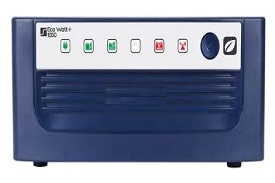 Inverter |
ITEW25 | Here are the steps on how to get EPR Authorization for Inverter in India: Apply for EPR Authorization from the Central Pollution Control Board (CPCB). Provide documentary evidence for E-waste management plan and agreement with Recycling agency. Pay the EPR Authorization fee. Obtain EPR Authorization Certificate from the CPCB. Here are the benefits of getting EPR Authorization for Inverter in India: It is mandatory for all electronic and electrical products, including inverters. It helps to reduce the amount of e-waste that ends up in landfills and incinerators. It promotes the recycling of e-waste, which helps to conserve resources and protect the environment. It helps to improve the image of the manufacturer or importer in the eyes of consumers. If you are a manufacturer or importer of inverters in India, you should obtain EPR Authorization to comply with the law and to protect the environment. Here are some of the things to consider when applying for EPR authorization for inverters in India: The type of inverter you are manufacturing or importing. The quantity of inverters you are manufacturing or importing. The name and address of the recycling agency that will be responsible for collecting and recycling the e-waste. A copy of the agreement between the manufacturer or importer and the recycling agency. |
| 25 | 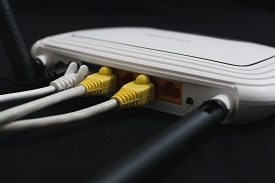 Modems |
ITEW26 | EPR stands for Extended Producer Responsibility. It is a policy that requires producers to take responsibility for the environmental impact of their products, even after they have been sold. This includes the collection and recycling of e-waste, such as modems. In India, the Bureau of Indian Standards (BIS) is responsible for implementing EPR for modems. To obtain EPR authorization, manufacturers and importers must meet certain requirements, such as:
Once a manufacturer or importer has obtained EPR authorization, they are responsible for collecting and recycling e-waste from their products. They can do this by setting up their own collection and recycling system, or by working with a third-party recycler. EPR is an important environmental policy that helps to reduce the amount of e-waste that ends up in landfills and incinerators. It also helps to protect human health and the environment by ensuring that e-waste is recycled in an environmentally sound manner. |
| 26 |  Electronic data storage devices |
ITEW27 | EPR stands for Extended Producer Responsibility. It is a policy that requires producers to take responsibility for the environmental impact of their products, even after they have been sold. This includes the collection and recycling of e-waste, such as electronic data storage devices (EDSDs). In India, the Bureau of Indian Standards (BIS) is responsible for implementing EPR for EDSDs. To obtain EPR authorization, manufacturers and importers must meet certain requirements, such as:
Once a manufacturer or importer has obtained EPR authorization, they are responsible for collecting and recycling e-waste from their products. They can do this by setting up their own collection and recycling system, or by working with a third-party recycler. EPR is an important environmental policy that helps to reduce the amount of e-waste that ends up in landfills and incinerators. It also helps to protect human health and the environment by ensuring that e-waste is recycled in an environmentally sound manner. Here are the steps on how to obtain EPR authorization for EDSDs in India:
|
| 27 |  Television sets (including sets based on (LCD and LED technology) |
CEEW1 | EPR stands for Extended Producer Responsibility. It is a policy that requires producers to take responsibility for the environmental impact of their products, even after they have been sold. This includes the collection and recycling of e-waste, such as television sets. In India, the Bureau of Indian Standards (BIS) is responsible for implementing EPR for television sets. To obtain EPR authorization, manufacturers and importers must meet certain requirements, such as:
Once a manufacturer or importer has obtained EPR authorization, they are responsible for collecting and recycling e-waste from their products. They can do this by setting up their own collection and recycling system, or by working with a third-party recycler. EPR is an important environmental policy that helps to reduce the amount of e-waste that ends up in landfills and incinerators. It also helps to protect human health and the environment by ensuring that e-waste is recycled in an environmentally sound manner. Here are the steps on how to obtain EPR authorization for television sets in India:
|
| 28 |  Refrigerator |
CEEW2 | EPR stands for Extended Producer Responsibility. It is a policy that requires producers to take responsibility for the environmental impact of their products, even after they have been sold. This includes the collection and recycling of e-waste, such as refrigerators. In India, the Bureau of Indian Standards (BIS) is responsible for implementing EPR for refrigerators. To obtain EPR authorization, manufacturers and importers must meet certain requirements, such as:
Once a manufacturer or importer has obtained EPR authorization, they are responsible for collecting and recycling e-waste from their products. They can do this by setting up their own collection and recycling system, or by working with a third-party recycler. EPR is an important environmental policy that helps to reduce the amount of e-waste that ends up in landfills and incinerators. It also helps to protect human health and the environment by ensuring that e-waste is recycled in an environmentally sound manner. Here are the steps on how to obtain EPR authorization for refrigerators in India: 1. Register with BIS. You can do this online at the BIS website. 2. Pay an EPR fee. The fee is based on the number of refrigerators you manufacture or import. 3. Develop an EPR plan. Your EPR plan must include details on how you will collect and recycle e-waste from your products. 4. Comply with all applicable environmental regulations. This includes regulations on the transportation, storage, and disposal of e-waste. Once you have met all of the requirements, you will be granted EPR authorization. You will then be responsible for collecting and recycling e-waste from your products. |
| 29 | 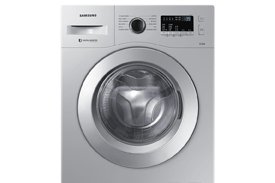 Washing Machine |
CEEW3 | EPR stands for Extended Producer Responsibility. It is a policy that requires producers to take responsibility for the environmental impact of their products, even after they have been sold. This includes the collection and recycling of e-waste, such as washing machines. In India, the Bureau of Indian Standards (BIS) is responsible for implementing EPR for washing machines. To obtain EPR authorization, manufacturers and importers must meet certain requirements, such as:
Once a manufacturer or importer has obtained EPR authorization, they are responsible for collecting and recycling e-waste from their products. They can do this by setting up their own collection and recycling system, or by working with a third-party recycler. EPR is an important environmental policy that helps to reduce the amount of e-waste that ends up in landfills and incinerators. It also helps to protect human health and the environment by ensuring that e-waste is recycled in an environmentally sound manner. Here are the steps on how to obtain EPR authorization for washing machines in India:
Once you have met all of the requirements, you will be granted EPR authorization. You will then be responsible for collecting and recycling e-waste from your products. Here are some of the benefits of EPR authorization:
If you manufacture or import washing machines in India, you should consider obtaining EPR authorization. It is an important environmental policy that can help to protect the environment and your business. Here are some of the common types of washing machines:
These products contain a variety of hazardous materials, such as lead, mercury, cadmium, and brominated flame retardants. These materials can be harmful to human health and the environment if they are not disposed of properly. EPR helps to ensure that these materials are recycled in an environmentally sound manner. This helps to protect human health and the environment, and it also helps to conserve natural resources. |
| 30 | 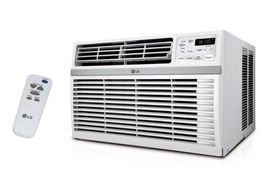 Air-conditioners excluding centralized air conditioning plants |
CEEW4 | EPR stands for Extended Producer Responsibility. It is a policy that requires producers to take responsibility for the environmental impact of their products, even after they have been sold. This includes the collection and recycling of e-waste, such as air conditioners. In India, the Bureau of Indian Standards (BIS) is responsible for implementing EPR for air conditioners. To obtain EPR authorization, manufacturers and importers must meet certain requirements, such as:
Once a manufacturer or importer has obtained EPR authorization, they are responsible for collecting and recycling e-waste from their products. They can do this by setting up their own collection and recycling system, or by working with a third-party recycler. EPR is an important environmental policy that helps to reduce the amount of e-waste that ends up in landfills and incinerators. It also helps to protect human health and the environment by ensuring that e-waste is recycled in an environmentally sound manner. Here are the steps on how to obtain EPR authorization for air conditioners in India:
Once you have met all of the requirements, you will be granted EPR authorization. You will then be responsible for collecting and recycling e-waste from your products. |
| 31 |  Fluorescent and other Mercury containing lamps |
CEEW5 | EPR stands for Extended Producer Responsibility. It is a policy that requires producers to take responsibility for the environmental impact of their products, even after they have been sold. This includes the collection and recycling of e-waste, such as fluorescent and other mercury-containing lamps. In India, the Bureau of Indian Standards (BIS) is responsible for implementing EPR for fluorescent and other mercury-containing lamps. To obtain EPR authorization, manufacturers and importers must meet certain requirements, such as:
Once a manufacturer or importer has obtained EPR authorization, they are responsible for collecting and recycling e-waste from their products. They can do this by setting up their own collection and recycling system, or by working with a third-party recycler. EPR is an important environmental policy that helps to reduce the amount of e-waste that ends up in landfills and incinerators. It also helps to protect human health and the environment by ensuring that e-waste is recycled in an environmentally sound manner. Here are the steps on how to obtain EPR authorization for fluorescent and other mercury-containing lamps in India:
Once you have met all of the requirements, you will be granted EPR authorization. You will then be responsible for collecting and recycling e-waste from your products. Here are some of the benefits of EPR authorization:
If you manufacture or import fluorescent and other mercury-containing lamps in India, you should consider obtaining EPR authorization. It is an important environmental policy that can help to protect the environment and your business. Here are some of the common types of fluorescent and other mercury-containing lamps:
These products contain a variety of hazardous materials, such as mercury, which can be harmful to human health and the environment if they are not disposed of properly. |
| 32 | 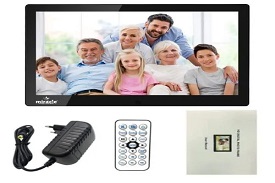 Screen, Electronic Photo frames, Electronic Display Panel, Monitors |
CEEW6 | EPR stands for Extended Producer Responsibility. It is a policy that requires producers to take responsibility for the environmental impact of their products, even after they have been sold. This includes the collection and recycling of e-waste, such as screens, electronic photo frames, electronic display panels, and monitors. In India, the Bureau of Indian Standards (BIS) is responsible for implementing EPR for screens, electronic photo frames, electronic display panels, and monitors. To obtain EPR authorization, manufacturers and importers must meet certain requirements, such as:
Once a manufacturer or importer has obtained EPR authorization, they are responsible for collecting and recycling e-waste from their products. They can do this by setting up their own collection and recycling system, or by working with a third-party recycler. EPR is an important environmental policy that helps to reduce the amount of e-waste that ends up in landfills and incinerators. It also helps to protect human health and the environment by ensuring that e-waste is recycled in an environmentally sound manner. Here are the steps on how to obtain EPR authorization for screens, electronic photo frames, electronic display panels, and monitors in India:
Once you have met all of the requirements, you will be granted EPR authorization. You will then be responsible for collecting and recycling e-waste from your products. |
| 33 | 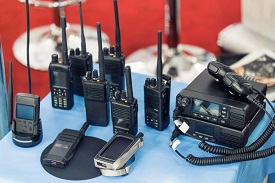 Radio sets |
CEEW7 | EPR stands for Extended Producer Responsibility. It is a policy that requires producers to take responsibility for the environmental impact of their products, even after they have been sold. This includes the collection and recycling of e-waste, such as radio sets. In India, the Bureau of Indian Standards (BIS) is responsible for implementing EPR for radio sets. To obtain EPR authorization, manufacturers and importers must meet certain requirements, such as:
Once a manufacturer or importer has obtained EPR authorization, they are responsible for collecting and recycling e-waste from their products. They can do this by setting up their own collection and recycling system, or by working with a third-party recycler. EPR is an important environmental policy that helps to reduce the amount of e-waste that ends up in landfills and incinerators. It also helps to protect human health and the environment by ensuring that e-waste is recycled in an environmentally sound manner. Here are the steps on how to obtain EPR authorization for radio sets in India:
Once you have met all of the requirements, you will be granted EPR authorization. You will then be responsible for collecting and recycling e-waste from your products. Here are some of the benefits of EPR authorization:
If you manufacture or import radio sets in India, you should consider obtaining EPR authorization. It is an important environmental policy that can help to protect the environment and your business. |
| 34 |  Set top Boxes |
CEEW8 | For set-top boxes, EPR (Extended Producer Responsibility) authorization or compliance typically refers to the requirement for manufacturers and importers to take responsibility for the environmental impact of their products throughout their lifecycle, including end-of-life management. This includes aspects such as recycling, proper disposal, and reducing the environmental footprint of the devices. Specific requirements and regulations related to EPR for set-top boxes can vary by country or region. However, some common measures and initiatives include: 1. Eco design requirements: Certain regions may have regulations that set energy efficiency standards for set-top boxes, aiming to reduce their power consumption during operation. 2. Recycling and waste management: Manufacturers and importers may be required to establish and fund systems for the collection, recycling, and appropriate disposal of set-top boxes at the end of their life. This may involve partnerships with recycling facilities or coordination with existing waste management programs. 3. Extended warranty or take-back programs: Some countries or regions may mandate or encourage manufacturers to provide extended warranty periods or take-back programs, allowing consumers to return their old set-top boxes for proper disposal or recycling. 4. Collaboration with industry organizations: Manufacturers and importers may be expected to work with industry organizations or government agencies to develop and implement EPR programs for set-top boxes. These programs can include setting recycling targets, reporting on environmental performance, and ensuring compliance with relevant regulations. To ensure compliance with EPR requirements for set-top boxes, it is important for manufacturers and importers to stay updated on the specific regulations and standards in the target market. This may involve consulting with regulatory agencies, industry associations, or seeking guidance from experts familiar with the local requirements. |
| 35 |  Video Cameras |
CEEW9 | For video cameras, EPR (Extended Producer Responsibility) authorization typically refers to the responsibility of manufacturers and importers to manage the environmental impact of their products throughout their lifecycle, including end-of-life management. The specific requirements and regulations related to EPR for video cameras can vary by country or region. However, some common measures and initiatives include:
To ensure compliance with EPR requirements for video cameras, manufacturers and importers should stay informed about the specific regulations and standards in the target market. This may involve consulting with regulatory agencies, industry associations, or seeking guidance from experts familiar with the local requirements. Additionally, establishing partnerships with recycling facilities or participating in industry-led recycling programs can facilitate compliance with EPR obligations for video cameras. |
| 36 |  Video Recorders |
CEEW10 | Yes, Extended Producer Responsibility (EPR) authorization is required for video recorders in India. EPR is a policy that requires producers to take responsibility for the environmental impact of their products, even after they have been sold. This includes the collection and recycling of e-waste, such as video recorders. The Bureau of Indian Standards (BIS) is responsible for implementing EPR for video recorders. To obtain EPR authorization, manufacturers and importers must meet certain requirements, such as:
Once a manufacturer or importer has obtained EPR authorization, they are responsible for collecting and recycling e-waste from their products. They can do this by setting up their own collection and recycling system, or by working with a third-party recycler. Here are some of the benefits of EPR authorization for video recorders:
If you manufacture or import video recorders in India, you should consider obtaining EPR authorization. It is an important environmental policy that can help to protect the environment and your business. Here are some of the common types of video recorders:
These products contain a variety of hazardous materials, such as lead, mercury, cadmium, and brominated flame retardants. These materials can be harmful to human health and the environment if they are not disposed of properly. EPR helps to ensure that these materials are recycled in an environmentally sound manner. This helps to protect human health and the environment, and it also helps to conserve natural resources. |
| 37 |  Hi-Fi Recorders |
CEEW11 | EPR stands for Extended Producer Responsibility. It is a policy that requires manufacturers and importers of electronic products to take responsibility for the collection and recycling of their products at the end of their life. This helps to reduce the amount of electronic waste that ends up in landfills and incinerators. Hi-Fi recorders are covered by the EPR scheme in India. This means that manufacturers and importers of hi-fi recorders are required to obtain EPR authorization from the Bureau of Indian Standards (BIS). EPR authorization is a legal requirement and failure to comply can result in fines or other penalties. To obtain EPR authorization, manufacturers and importers of hi-fi recorders must submit an application to the BIS. The application must include information on the following:
The BIS will review the application and may require additional information or documentation. If the application is approved, the BIS will issue an EPR authorization certificate. The EPR authorization certificate must be displayed on all hi-fi recorders that are sold in India. This helps consumers to identify products that are covered by the EPR scheme and that have been manufactured or imported by a responsible company. The EPR scheme is an important step in reducing the amount of electronic waste in India. By requiring manufacturers and importers to take responsibility for the collection and recycling of their products, the EPR scheme helps to protect the environment and public health. |
| 38 |  Audio Amplifiers |
CEEW12 | EPR stands for Extended Producer Responsibility. It is a policy that requires manufacturers and importers of electronic products to take responsibility for the collection and recycling of their products at the end of their life. This helps to reduce the amount of electronic waste that ends up in landfills and incinerators. Audio amplifiers are covered by the EPR scheme in India. This means that manufacturers and importers of audio amplifiers are required to obtain EPR authorization from the Bureau of Indian Standards (BIS). EPR authorization is a legal requirement and failure to comply can result in fines or other penalties. To obtain EPR authorization, manufacturers and importers of audio amplifiers must submit an application to the BIS. The application must include information on the following:
The BIS will review the application and may require additional information or documentation. If the application is approved, the BIS will issue an EPR authorization certificate. The EPR authorization certificate must be displayed on all audio amplifiers that are sold in India. This helps consumers to identify products that are covered by the EPR scheme and that have been manufactured or imported by a responsible company. The EPR scheme is an important step in reducing the amount of electronic waste in India. By requiring manufacturers and importers to take responsibility for the collection and recycling of their products, the EPR scheme helps to protect the environment and public health. Here are some of the benefits of EPR:
If you are a manufacturer or importer of audio amplifiers, you should contact the BIS to learn more about the EPR scheme and how to obtain EPR authorization. |
| 39 | 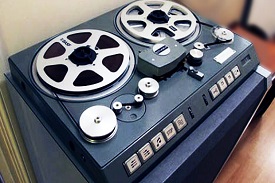 Product for recording or reproducing sound or images |
CEEW13 | EPR stands for Extended Producer Responsibility. It is a policy that requires manufacturers and importers of electronic products to take responsibility for the collection and recycling of their products at the end of their life. This helps to reduce the amount of electronic waste that ends up in landfills and incinerators. Products for recording or reproducing sound or images are covered by the EPR scheme in India. This means that manufacturers and importers of these products are required to obtain EPR authorization from the Bureau of Indian Standards (BIS). EPR authorization is a legal requirement and failure to comply can result in fines or other penalties. To obtain EPR authorization, manufacturers and importers of products for recording or reproducing sound or images must submit an application to the BIS. The application must include information on the following:
The BIS will review the application and may require additional information or documentation. If the application is approved, the BIS will issue an EPR authorization certificate. |
| 40 | 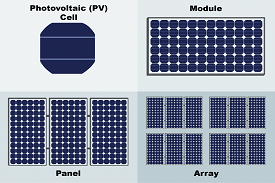 Solar panels / cells, solar Photovoltaic panels / cells / modules |
CEEW14 | EPR stands for Extended Producer Responsibility. It is a policy that requires manufacturers and importers of electronic products to take responsibility for the collection and recycling of their products at the end of their life. This helps to reduce the amount of electronic waste that ends up in landfills and incinerators. Solar panels and modules are covered by the EPR scheme in India. This means that manufacturers and importers of these products are required to obtain EPR authorization from the Bureau of Indian Standards (BIS). EPR authorization is a legal requirement and failure to comply can result in fines or other penalties. To obtain EPR authorization, manufacturers and importers of solar panels and modules must submit an application to the BIS. The application must include information on the following:
The BIS will review the application and may require additional information or documentation. If the application is approved, the BIS will issue an EPR authorization certificate. The EPR authorization certificate must be displayed on all solar panels and modules that are sold in India. This helps consumers to identify products that are covered by the EPR scheme and that have been manufactured or imported by a responsible company. The EPR scheme is an important step in reducing the amount of electronic waste in India. By requiring manufacturers and importers to take responsibility for the collection and recycling of their products, the EPR scheme helps to protect the environment and public health. Here are some of the benefits of EPR:
If you are a manufacturer or importer of solar panels and modules, you should contact the BIS to learn more about the EPR scheme and how to obtain EPR authorization. |
| 41 |  High intensity discharge lamps, including pressure sodium lamps and metal halide lamps |
CEEW16 | EPR stands for Extended Producer Responsibility. It is a policy that requires manufacturers and importers of electronic products to take responsibility for the collection and recycling of their products at the end of their life. This helps to reduce the amount of electronic waste that ends up in landfills and incinerators. High intensity discharge lamps (HID lamps), including pressure sodium lamps and metal halide lamps, are covered by the EPR scheme in India. This means that manufacturers and importers of these products are required to obtain EPR authorization from the Bureau of Indian Standards (BIS). EPR authorization is a legal requirement and failure to comply can result in fines or other penalties. To obtain EPR authorization, manufacturers and importers of HID lamps must submit an application to the BIS. The application must include information on the following:
The BIS will review the application and may require additional information or documentation. If the application is approved, the BIS will issue an EPR authorization certificate. The EPR authorization certificate must be displayed on all HID lamps that are sold in India. This helps consumers to identify products that are covered by the EPR scheme and that have been manufactured or imported by a responsible company. The EPR scheme is an important step in reducing the amount of electronic waste in India. By requiring manufacturers and importers to take responsibility for the collection and recycling of their products, the EPR scheme helps to protect the environment and public health. |
| 42 |  Low pressure sodium lamps |
CEEW17 | Yes, Low pressure sodium lamps (LPS) are covered under the Extended Producer Responsibility (EPR) scheme in India. This means that manufacturers and importers of LPS are required to obtain EPR authorization from the Bureau of Indian Standards (BIS). EPR authorization is a legal requirement and failure to comply can result in fines or other penalties. To obtain EPR authorization, manufacturers and importers of LPS must submit an application to the BIS. The application must include information on the following:
The BIS will review the application and may require additional information or documentation. If the application is approved, the BIS will issue an EPR authorization certificate. The EPR authorization certificate must be displayed on all LPS that are sold in India. This helps consumers to identify products that are covered by the EPR scheme and that have been manufactured or imported by a responsible company. The EPR scheme is an important step in reducing the amount of electronic waste in India. By requiring manufacturers and importers to take responsibility for the collection and recycling of their products, the EPR scheme helps to protect the environment and public health. Here are some of the benefits of EPR:
|
| 43 | 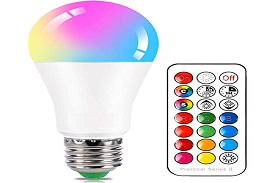 Other lighting or equipment for the purpose of spreading or controlling light excluding filament bulbs |
CEEW18 | Yes, EPR authorization is mandatory for other lighting or equipment for the purpose of spreading or controlling light excluding filament bulbs in India. This means that manufacturers and importers of these products are required to obtain EPR authorization from the Bureau of Indian Standards (BIS). EPR authorization is a legal requirement and failure to comply can result in fines or other penalties. To obtain EPR authorization, manufacturers and importers of other lighting or equipment for the purpose of spreading or controlling light excluding filament bulbs must submit an application to the BIS. The application must include information on the following:
The BIS will review the application and may require additional information or documentation. If the application is approved, the BIS will issue an EPR authorization certificate. The EPR authorization certificate must be displayed on all other lighting or equipment for the purpose of spreading or controlling light excluding filament bulbs that are sold in India. This helps consumers to identify products that are covered by the EPR scheme and that have been manufactured or imported by a responsible company. The EPR scheme is an important step in reducing the amount of electronic waste in India. By requiring manufacturers and importers to take responsibility for the collection and recycling of their products, the EPR scheme helps to protect the environment and public health. |
| 44 |  Digital camera |
CEEW19 | Yes, EPR authorization is mandatory for digital cameras in India. This means that manufacturers and importers of these products are required to obtain EPR authorization from the Bureau of Indian Standards (BIS). EPR authorization is a legal requirement and failure to comply can result in fines or other penalties. To obtain EPR authorization, manufacturers and importers of digital cameras must submit an application to the BIS. The application must include information on the following:
The BIS will review the application and may require additional information or documentation. If the application is approved, the BIS will issue an EPR authorization certificate. The EPR authorization certificate must be displayed on all digital cameras that are sold in India. This helps consumers to identify products that are covered by the EPR scheme and that have been manufactured or imported by a responsible company. The EPR scheme is an important step in reducing the amount of electronic waste in India. By requiring manufacturers and importers to take responsibility for the collection and recycling of their products, the EPR scheme helps to protect the environment and public health. |
| 45 |  Large cooling appliances |
LSEEW1 | EPR authorization is mandatory for large cooling appliances in India. This means that manufacturers and importers of these products are required to obtain EPR authorization from the Bureau of Indian Standards (BIS). EPR authorization is a legal requirement and failure to comply can result in fines or other penalties. To obtain EPR authorization, manufacturers and importers of large cooling appliances must submit an application to the BIS. The application must include information on the following:
The BIS will review the application and may require additional information or documentation. If the application is approved, the BIS will issue an EPR authorization certificate. The EPR authorization certificate must be displayed on all large cooling appliances that are sold in India. This helps consumers to identify products that are covered by the EPR scheme and that have been manufactured or imported by a responsible company. The EPR scheme is an important step in reducing the amount of electronic waste in India. By requiring manufacturers and importers to take responsibility for the collection and recycling of their products, the EPR scheme helps to protect the environment and public health. |
| 46 |  Freezers |
LSEEW2 | EPR (Extended Producer Responsibility) authorization or compliance for freezers typically refers to the responsibility of manufacturers and importers to manage the environmental impact of their products throughout their lifecycle, including end-of-life management. Specific requirements and regulations related to EPR for freezers can vary by country or region. However, some common measures and initiatives include:
|
| 47 |  Other large appliances used for refrigeration, conservation and storage of food |
LSEEW3 | EPR authorization is mandatory for other large appliances used for refrigeration, conservation, and storage of food in India. This means that manufacturers and importers of these products are required to obtain EPR authorization from the Bureau of Indian Standards (BIS). EPR authorization is a legal requirement and failure to comply can result in fines or other penalties. To obtain EPR authorization, manufacturers and importers of other large appliances used for refrigeration, conservation, and storage of food must submit an application to the BIS. The application must include information on the following:
The BIS will review the application and may require additional information or documentation. If the application is approved, the BIS will issue an EPR authorization certificate. The EPR authorization certificate must be displayed on all other large appliances used for refrigeration, conservation, and storage of food that are sold in India. This helps consumers to identify products that are covered by the EPR scheme and that have been manufactured or imported by a responsible company. The EPR scheme is an important step in reducing the amount of electronic waste in India. By requiring manufacturers and importers to take responsibility for the collection and recycling of their products, the EPR scheme helps to protect the environment and public health. |
| 48 | 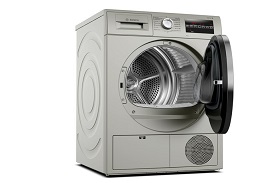 Clothes dryers |
LSEEW4 | EPR authorization is mandatory for clothes dryers in India. This means that manufacturers and importers of these products are required to obtain EPR authorization from the Bureau of Indian Standards (BIS). EPR authorization is a legal requirement and failure to comply can result in fines or other penalties. To obtain EPR authorization, manufacturers and importers of clothes dryers must submit an application to the BIS. The application must include information on the following:
The BIS will review the application and may require additional information or documentation. If the application is approved, the BIS will issue an EPR authorization certificate. The EPR authorization certificate must be displayed on all clothes dryers that are sold in India. This helps consumers to identify products that are covered by the EPR scheme and that have been manufactured or imported by a responsible company. The EPR scheme is an important step in reducing the amount of electronic waste in India. By requiring manufacturers and importers to take responsibility for the collection and recycling of their products, the EPR scheme helps to protect the environment and public health. Here are some of the benefits of EPR:
|
| 49 |  Dish Washing Machines |
LSEEW5 | EPR authorization is mandatory for dish washing machines in India. This means that manufacturers and importers of these products are required to obtain EPR authorization from the Bureau of Indian Standards (BIS). EPR authorization is a legal requirement and failure to comply can result in fines or other penalties. To obtain EPR authorization, manufacturers and importers of dish washing machines must submit an application to the BIS. The application must include information on the following:
The BIS will review the application and may require additional information or documentation. If the application is approved, the BIS will issue an EPR authorization certificate. The EPR authorization certificate must be displayed on all dish washing machines that are sold in India. This helps consumers to identify products that are covered by the EPR scheme and that have been manufactured or imported by a responsible company. The EPR scheme is an important step in reducing the amount of electronic waste in India. By requiring manufacturers and importers to take responsibility for the collection and recycling of their products, the EPR scheme helps to protect the environment and public health. Here are some of the benefits of EPR:
It encourages manufacturers to design products that are easier to recycle. |
| 50 |  Electric cookers |
LSEEW6 | EPR authorization is mandatory for electric cookers in India. This means that manufacturers and importers of these products are required to obtain EPR authorization from the Bureau of Indian Standards (BIS). EPR authorization is a legal requirement and failure to comply can result in fines or other penalties. To obtain EPR authorization, manufacturers and importers of electric cookers must submit an application to the BIS. The application must include information on the following:
The BIS will review the application and may require additional information or documentation. If the application is approved, the BIS will issue an EPR authorization certificate. The EPR authorization certificate must be displayed on all electric cookers that are sold in India. This helps consumers to identify products that are covered by the EPR scheme and that have been manufactured or imported by a responsible company. The EPR scheme is an important step in reducing the amount of electronic waste in India. By requiring manufacturers and importers to take responsibility for the collection and recycling of their products, the EPR scheme helps to protect the environment and public health. |
| 51 |  Electric stoves |
LSEEW7 | EPR (Extended Producer Responsibility) authorization or compliance for electric stoves typically refers to the responsibility of manufacturers and importers to manage the environmental impact of their products throughout their lifecycle, including end-of-life management. While specific requirements and regulations related to EPR for electric stoves can vary by country or region, here are some general measures and initiatives that may apply:
To ensure compliance with EPR requirements for electric stoves, manufacturers and importers should stay informed about the specific regulations and standards in the target market. This may involve consulting with regulatory agencies, industry associations, or seeking guidance from experts familiar with the local requirements. Additionally, establishing partnerships with recycling facilities or participating in industry-led recycling programs can facilitate compliance with EPR obligations for electric stoves. |
| 52 |  Electric hot plates |
LSEEW8 | EPR authorization is mandatory for electric hot plates in India. This means that manufacturers and importers of these products are required to obtain EPR authorization from the Bureau of Indian Standards (BIS). EPR authorization is a legal requirement and failure to comply can result in fines or other penalties. To obtain EPR authorization, manufacturers and importers of electric hot plates must submit an application to the BIS. The application must include information on the following:
The BIS will review the application and may require additional information or documentation. If the application is approved, the BIS will issue an EPR authorization certificate. The EPR authorization certificate must be displayed on all electric hot plates that are sold in India. This helps consumers to identify products that are covered by the EPR scheme and that have been manufactured or imported by a responsible company. The EPR scheme is an important step in reducing the amount of electronic waste in India. By requiring manufacturers and importers to take responsibility for the collection and recycling of their products, the EPR scheme helps to protect the environment and public health. |
| 53 |  Microwaves, Microwave Oven |
LSEEW9 | EPR authorization is mandatory for microwaves and microwave ovens in India. This means that manufacturers and importers of these products are required to obtain EPR authorization from the Bureau of Indian Standards (BIS). EPR authorization is a legal requirement and failure to comply can result in fines or other penalties. To obtain EPR authorization, manufacturers and importers of microwaves and microwave ovens must submit an application to the BIS. The application must include information on the following:
The BIS will review the application and may require additional information or documentation. If the application is approved, the BIS will issue an EPR authorization certificate. The EPR authorization certificate must be displayed on all microwaves and microwave ovens that are sold in India. This helps consumers to identify products that are covered by the EPR scheme and that have been manufactured or imported by a responsible company. The EPR scheme is an important step in reducing the amount of electronic waste in India. By requiring manufacturers and importers to take responsibility for the collection and recycling of their products, the EPR scheme helps to protect the environment and public health. |
| 54 |  Other large appliances used for cooking and other processing of food |
LSEEW10 | EPR authorization is mandatory for other large appliances used for cooking and other processing of food in India. This means that manufacturers and importers of these products are required to obtain EPR authorization from the Bureau of Indian Standards (BIS). EPR authorization is a legal requirement and failure to comply can result in fines or other penalties. To obtain EPR authorization, manufacturers and importers of other large appliances used for cooking and other processing of food must submit an application to the BIS. The application must include information on the following:
The BIS will review the application and may require additional information or documentation. If the application is approved, the BIS will issue an EPR authorization certificate. The EPR authorization certificate must be displayed on all other large appliances used for cooking and other processing of food that are sold in India. This helps consumers to identify products that are covered by the EPR scheme and that have been manufactured or imported by a responsible company. The EPR scheme is an important step in reducing the amount of electronic waste in India. By requiring manufacturers and importers to take responsibility for the collection and recycling of their products, the EPR scheme helps to protect the environment and public health. The EPR authorization certificate is valid for a period of five years. After the expiry of the EPR authorization certificate, the manufacturer or importer must renew the certificate by submitting a fresh application to the BIS. The EPR scheme is a valuable tool for reducing the amount of electronic waste in India. By requiring manufacturers and importers to take responsibility for the collection and recycling of their products, the EPR scheme helps to protect the environment and public health. |
| 55 | 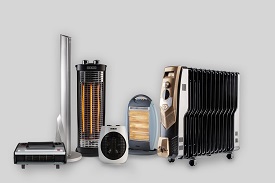 Electric heating appliances |
LSEEW11 | EPR authorization is mandatory for electric heating appliances in India. This means that manufacturers and importers of these products are required to obtain EPR authorization from the Bureau of Indian Standards (BIS). EPR authorization is a legal requirement and failure to comply can result in fines or other penalties. To obtain EPR authorization, manufacturers and importers of electric heating appliances must submit an application to the BIS. The application must include information on the following:
The BIS will review the application and may require additional information or documentation. If the application is approved, the BIS will issue an EPR authorization certificate. The EPR authorization certificate must be displayed on all electric heating appliances that are sold in India. This helps consumers to identify products that are covered by the EPR scheme and that have been manufactured or imported by a responsible company. The EPR scheme is an important step in reducing the amount of electronic waste in India. By requiring manufacturers and importers to take responsibility for the collection and recycling of their products, the EPR scheme helps to protect the environment and public health. |
| 56 | 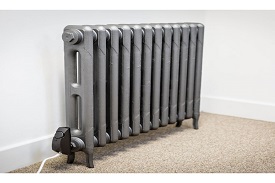 Electric radiators |
LSEEW12 | EPR (Extended Producer Responsibility) authorization or compliance for electric radiators typically refers to the responsibility of manufacturers and importers to manage the environmental impact of their products throughout their lifecycle, including end-of-life management. Although specific requirements and regulations related to EPR for electric radiators can vary by country or region, here are some general measures and initiatives that may apply:
To ensure compliance with EPR requirements for electric radiators, manufacturers and importers should stay informed about the specific regulations and standards in the target market. This may involve consulting with regulatory agencies, industry associations, or seeking guidance from experts familiar with the local requirements. Additionally, establishing partnerships with recycling facilities or participating in industry-led recycling programs can facilitate compliance with EPR obligations for electric radiators. |
| 57 | 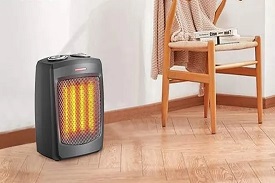 Other large appliances for heating rooms, beds, seating furniture |
LSEEW13 | EPR stands for Extended Producer Responsibility. It is a policy that requires producers of electronic and electrical equipment to take responsibility for the environmental impact of their products, including the collection and recycling of e-waste. In India, EPR is regulated by the Bureau of Indian Standards (BIS). BIS has identified a list of products that are covered by EPR, including other large appliances for heating rooms, beds, and seating furniture. To obtain EPR authorization for these products, manufacturers and importers must register with BIS and comply with the EPR regulations. These regulations include requirements for collection, recycling, and disposal of e-waste. The EPR regulations are designed to protect the environment and ensure that e-waste is managed in a safe and responsible manner. By complying with the EPR regulations, manufacturers and importers can help to reduce the environmental impact of their products. Here are the steps to obtain EPR authorization for other large appliances for heating rooms, beds, and seating furniture: 1. Register with BIS. 2. Submit an EPR plan. 3. Pay the EPR fee. 4. Comply with the EPR regulations. The EPR plan must include the following information: The name and address of the manufacturer or importer. The type and quantity of products that will be covered by EPR. The collection and recycling system that will be used. The disposal method that will be used. The EPR fee is based on the type and quantity of products that will be covered by EPR. The fee is used to fund the collection, recycling, and disposal of e-waste. By complying with the EPR regulations, manufacturers and importers can help to reduce the environmental impact of their products and protect the environment. |
| 58 | 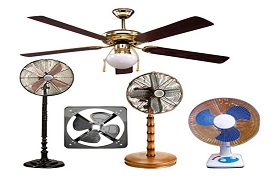 Electric fans |
LSEEW14 | EPR stands for Extended Producer Responsibility. It is a policy that requires producers of electronic and electrical equipment to take responsibility for the environmental impact of their products, including the collection and recycling of e-waste. In India, EPR is regulated by the Bureau of Indian Standards (BIS). BIS has identified a list of products that are covered by EPR, including electric fans. To obtain EPR authorization for electric fans, manufacturers and importers must register with BIS and comply with the EPR regulations. These regulations include requirements for collection, recycling, and disposal of e-waste. The EPR regulations are designed to protect the environment and ensure that e-waste is managed in a safe and responsible manner. By complying with the EPR regulations, manufacturers and importers can help to reduce the environmental impact of their products. Here are the steps to obtain EPR authorization for electric fans:
|
| 59 | 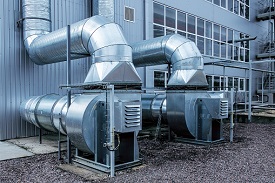 Other fanning, exhaust ventilation and conditioning equipment |
LSEEW15 | EPR Authorization for Other fanning, exhaust ventilation and conditioning equipment is a process that allows manufacturers and importers of these products to sell them in India. The process involves submitting an application to the Bureau of Indian Standards (BIS) and providing documentation that the products meet the required standards. Once the application is approved, the manufacturer or importer will be issued an EPR Authorization Certificate. The EPR Authorization Certificate is required for all Other fanning, exhaust ventilation and conditioning equipment that is sold in India. The purpose of the EPR Authorization is to ensure that these products meet the required safety and quality standards. The EPR Authorization also helps to protect consumers from counterfeit and substandard products. The EPR Authorization process is relatively straightforward. The first step is to submit an application to the BIS. The application can be submitted online or by mail. The application must include the following information:
Once the application is submitted, the BIS will review it and make a decision within 30 days. If the application is approved, the manufacturer or importer will be issued an EPR Authorization Certificate. The EPR Authorization Certificate is valid for 5 years. After 5 years, the manufacturer or importer must renew the certificate by submitting an application to the BIS. The EPR Authorization process is an important step in ensuring the safety and quality of Other fanning, exhaust ventilation and conditioning equipment that is sold in India. The EPR Authorization helps to protect consumers from counterfeit and substandard products and ensures that these products meet the required safety and quality standards. Here are the benefits of EPR Authorization for Other fanning, exhaust ventilation and conditioning equipment:
If you are a manufacturer or importer of Other fanning, exhaust ventilation and conditioning equipment, I encourage you to apply for EPR Authorization. The process is relatively straightforward and the benefits are significant. |
| 60 |  Vacuum cleaners |
LSEEW16 | EPR Authorization for Vacuum cleaners is a process that allows manufacturers and importers of these products to sell them in India. The process involves submitting an application to the Bureau of Indian Standards (BIS) and providing documentation that the products meet the required standards. Once the application is approved, the manufacturer or importer will be issued an EPR Authorization Certificate. The EPR Authorization Certificate is required for all Vacuum cleaners that is sold in India. The purpose of the EPR Authorization is to ensure that these products meet the required safety and quality standards. The EPR Authorization also helps to protect consumers from counterfeit and substandard products. The EPR Authorization process is relatively straightforward. The first step is to submit an application to the BIS. The application can be submitted online or by mail. The application must include the following information:
Once the application is submitted, the BIS will review it and make a decision within 30 days. If the application is approved, the manufacturer or importer will be issued an EPR Authorization Certificate. The EPR Authorization Certificate is valid for 5 years. After 5 years, the manufacturer or importer must renew the certificate by submitting an application to the BIS. The EPR Authorization process is an important step in ensuring the safety and quality of Vacuum cleaners that is sold in India. The EPR Authorization helps to protect consumers from counterfeit and substandard products and ensures that these products meet the required safety and quality standards. |
| 61 |  Carpet sweepers |
LSEEW17 | EPR Authorization for Carpet sweepers is a process that allows manufacturers and importers of these products to sell them in India. The process involves submitting an application to the Bureau of Indian Standards (BIS) and providing documentation that the products meet the required standards. Once the application is approved, the manufacturer or importer will be issued an EPR Authorization Certificate. The EPR Authorization Certificate is required for all Carpet sweepers that is sold in India. The purpose of the EPR Authorization is to ensure that these products meet the required safety and quality standards. The EPR Authorization also helps to protect consumers from counterfeit and substandard products. The EPR Authorization process is relatively straightforward. The first step is to submit an application to the BIS. The application can be submitted online or by mail. The application must include the following information:
Once the application is submitted, the BIS will review it and make a decision within 30 days. If the application is approved, the manufacturer or importer will be issued an EPR Authorization Certificate. The EPR Authorization Certificate is valid for 5 years. After 5 years, the manufacturer or importer must renew the certificate by submitting an application to the BIS. |
| 62 |  Other appliances for cleaning |
LSEEW18 | EPR Authorization for Other appliances for cleaning is a process that allows manufacturers and importers of these products to sell them in India. The process involves submitting an application to the Bureau of Indian Standards (BIS) and providing documentation that the products meet the required standards. Once the application is approved, the manufacturer or importer will be issued an EPR Authorization Certificate. The EPR Authorization Certificate is required for all Other appliances for cleaning that is sold in India. The purpose of the EPR Authorization is to ensure that these products meet the required safety and quality standards. The EPR Authorization also helps to protect consumers from counterfeit and substandard products. The EPR Authorization process is relatively straightforward. The first step is to submit an application to the BIS. The application can be submitted online or by mail. The application must include the following information:
Once the application is submitted, the BIS will review it and make a decision within 30 days. If the application is approved, the manufacturer or importer will be issued an EPR Authorization Certificate. The EPR Authorization Certificate is valid for 5 years. After 5 years, the manufacturer or importer must renew the certificate by submitting an application to the BIS. The EPR Authorization process is an important step in ensuring the safety and quality of Other appliances for cleaning that is sold in India. The EPR Authorization helps to protect consumers from counterfeit and substandard products and ensures that these products meet the required safety and quality standards. |
| 63 |  Appliances used for sewing, knitting, weaving and other processing for textiles |
LSEEW19 | EPR Authorization for Appliances used for sewing, knitting, weaving and other processing for textiles is a process that allows manufacturers and importers of these products to sell them in India. The process involves submitting an application to the Bureau of Indian Standards (BIS) and providing documentation that the products meet the required standards. Once the application is approved, the manufacturer or importer will be issued an EPR Authorization Certificate. The EPR Authorization Certificate is required for all Appliances used for sewing, knitting, weaving and other processing for textiles that is sold in India. The purpose of the EPR Authorization is to ensure that these products meet the required safety and quality standards. The EPR Authorization also helps to protect consumers from counterfeit and substandard products. The EPR Authorization process is relatively straightforward. The first step is to submit an application to the BIS. The application can be submitted online or by mail. The application must include the following information:
Once the application is submitted, the BIS will review it and make a decision within 30 days. If the application is approved, the manufacturer or importer will be issued an EPR Authorization Certificate. The EPR Authorization Certificate is valid for 5 years. After 5 years, the manufacturer or importer must renew the certificate by submitting an application to the BIS. The EPR Authorization process is an important step in ensuring the safety and quality of Appliances used for sewing, knitting, weaving and other processing for textiles that is sold in India. The EPR Authorization helps to protect consumers from counterfeit and substandard products and ensures that these products meet the required safety and quality standards. |
| 64 | Iron and other appliances for ironing, mangling and other care of clothing |
LSEEW20 | EPR Authorization for Iron and other appliances for ironing, mangling and other care of clothing is a process that allows manufacturers and importers of these products to sell them in India. The process involves submitting an application to the Bureau of Indian Standards (BIS) and providing documentation that the products meet the required standards. Once the application is approved, the manufacturer or importer will be issued an EPR Authorization Certificate. The EPR Authorization Certificate is required for all Iron and other appliances for ironing, mangling and other care of clothing that is sold in India. The purpose of the EPR Authorization is to ensure that these products meet the required safety and quality standards. The EPR Authorization also helps to protect consumers from counterfeit and substandard products. The EPR Authorization process is relatively straightforward. The first step is to submit an application to the BIS. The application can be submitted online or by mail. The application must include the following information:
The EPR Authorization process is an important step in ensuring the safety and quality of Iron and other appliances for ironing, mangling and other care of clothing that is sold in India. The EPR Authorization helps to protect consumers from counterfeit and substandard products and ensures that these products meet the required safety and quality standards. Here are the benefits of EPR Authorization for Iron and other appliances for ironing, mangling and other care of clothing:
If you are a manufacturer or importer of Iron and other appliances for ironing, mangling and other care of clothing, I encourage you to apply for EPR Authorization. The process is relatively straightforward and the benefits are significant. Here are some of the steps involved in the EPR Authorization process for Iron and other appliances for ironing, mangling and other care of clothing:
|
| 65 | 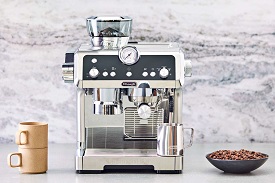 Grinders, coffee machines and equipment for opening or sealing containers or packages |
LSEEW21 | EPR Authorization for Grinders, coffee machines and equipment for opening or sealing containers or packages is a process that allows manufacturers and importers of these products to sell them in India. The process involves submitting an application to the Bureau of Indian Standards (BIS) and providing documentation that the products meet the required standards. Once the application is approved, the manufacturer or importer will be issued an EPR Authorization Certificate. The EPR Authorization Certificate is required for all Grinders, coffee machines and equipment for opening or sealing containers or packages that is sold in India. The purpose of the EPR Authorization is to ensure that these products meet the required safety and quality standards. The EPR Authorization also helps to protect consumers from counterfeit and substandard products. The EPR Authorization process is relatively straightforward. The first step is to submit an application to the BIS. The application can be submitted online or by mail. The application must include the following information:
Once the application is submitted, the BIS will review it and make a decision within 30 days. If the application is approved, the manufacturer or importer will be issued an EPR Authorization Certificate. The EPR Authorization Certificate is valid for 5 years. After 5 years, the manufacturer or importer must renew the certificate by submitting an application to the BIS. The EPR Authorization process is an important step in ensuring the safety and quality of Grinders, coffee machines and equipment for opening or sealing containers or packages that is sold in India. The EPR Authorization helps to protect consumers from counterfeit and substandard products and ensures that these products meet the required safety and quality standards. |
| 66 |  Smoke detector |
LSEEW22 | Extended Producer Responsibility (EPR) is a policy that shifts the responsibility for managing the end-of-life of a product from the government to the producer. In the case of smoke detectors, this means that manufacturers and importers of smoke detectors in India are responsible for collecting and recycling end-of-life smoke detectors. There are a number of benefits to EPR for smoke detectors. First, it helps to ensure that smoke detectors are properly disposed of and recycled, which can help to protect the environment. Second, EPR can help to reduce the amount of waste that is sent to landfills. Third, EPR can help to create jobs in the recycling and reuse sector. EPR is an important policy that can help to protect the environment and create jobs. If you are a manufacturer or importer of smoke detectors in India, I encourage you to learn more about EPR and how you can obtain EPR authorization. Here are some of the steps involved in the EPR Authorization process for smoke detectors:
The EPR Authorization process is an important step in ensuring the safety and quality of smoke detectors that is sold in India. The EPR Authorization helps to protect consumers from counterfeit and substandard products and ensures that these products meet the required safety and quality standards. |
| 67 |  Heating Regulators |
LSEEW23 | Extended Producer Responsibility (EPR) is a policy that shifts the responsibility for managing the end-of-life of a product from the government to the producer. In the case of heating regulators, this means that manufacturers and importers of heating regulators in India are responsible for collecting and recycling end-of-life heating regulators. EPR is an important policy that can help to protect the environment and create jobs. If you are a manufacturer or importer of heating regulators in India, I encourage you to learn more about EPR and how you can obtain EPR authorization. Here are some of the steps involved in the EPR Authorization process for heating regulators: 1. Identify the applicable regulations. The first step is to identify the applicable regulations for heating regulators in India. The Central Pollution Control Board (CPCB) is the government agency responsible for regulating e-waste in India. The CPCB has issued a number of regulations that apply to heating regulators, including: o The E-Waste (Management) Rules, 2016 o The Extended Producer Responsibility (EPR) Policy, 2016 2. Gather the required documentation. Once you have identified the applicable regulations, you will need to gather the required documentation. The documentation that you will need to submit for EPR Authorization for heating regulators includes: o A copy of the product's registration certificate with BIS o A copy of the product's test report o A copy of the product's user manual 3. Submit the application. Once you have gathered the required documentation, you can submit your application for EPR Authorization to the CPCB. The application can be submitted online or by mail. 4. Pay the application fee. The CPCB charges an application fee for EPR Authorization. The application fee is currently INR 10,000. 5. Wait for the decision. The CPCB will review your application and make a decision within 30 days. If your application is approved, you will be issued an EPR Authorization Certificate. 6. Renew the certificate. The EPR Authorization Certificate is valid for 5 years. After 5 years, you will need to renew the certificate by submitting an application to the CPCB. The EPR Authorization process is an important step in ensuring the safety and quality of heating regulators that is sold in India. The EPR Authorization helps to protect consumers from counterfeit and substandard products and ensures that these products meet the required safety and quality standards. |
| 68 |  Thermostats |
LSEEW24 | Extended Producer Responsibility (EPR) is a policy that shifts the responsibility for managing the end-of-life of a product from the government to the producer. In the case of thermostats, this means that manufacturers and importers of thermostats in India are responsible for collecting and recycling end-of-life thermostats. There are a number of benefits to EPR for thermostats. First, it helps to ensure that thermostats are properly disposed of and recycled, which can help to protect the environment. Second, EPR can help to reduce the amount of waste that is sent to landfills. Third, EPR can help to create jobs in the recycling and reuse sector. To obtain EPR authorization for thermostats in India, manufacturers and importers must meet certain requirements. These requirements include:
Once a manufacturer or importer has obtained EPR authorization, they are required to collect and recycle a certain percentage of end-of-life thermostats. The percentage that must be collected and recycled varies depending on the type of thermostat. EPR is an important policy that can help to protect the environment and create jobs. If you are a manufacturer or importer of thermostats in India, I encourage you to learn more about EPR and how you can obtain EPR authorization. |
| 69 |  Automatic dispensers for hot drinks |
LSEEW25 | Extended Producer Responsibility (EPR) is a policy that shifts the responsibility for managing the end-of-life of a product from the government to the producer. In the case of automatic dispensers for hot drinks, this means that manufacturers and importers of automatic dispensers for hot drinks in India are responsible for collecting and recycling end-of-life automatic dispensers for hot drinks. There are a number of benefits to EPR for automatic dispensers for hot drinks. First, it helps to ensure that automatic dispensers for hot drinks are properly disposed of and recycled, which can help to protect the environment. Second, EPR can help to reduce the amount of waste that is sent to landfills. Third, EPR can help to create jobs in the recycling and reuse sector. To obtain EPR authorization for automatic dispensers for hot drinks in India, manufacturers and importers must meet certain requirements. These requirements include:
Once a manufacturer or importer has obtained EPR authorization, they are required to collect and recycle a certain percentage of end-of-life automatic dispensers for hot drinks. The percentage that must be collected and recycled varies depending on the type of automatic dispenser for hot drinks. EPR is an important policy that can help to protect the environment and create jobs. If you are a manufacturer or importer of automatic dispensers for hot drinks in India, I encourage you to learn more about EPR and how you can obtain EPR authorization. |
| 70 |  Automatic dispensers for hot or cold bottles or cans |
LSEEW26 | Extended Producer Responsibility (EPR) is a policy that shifts the responsibility for managing the end-of-life of a product from the government to the producer. In the case of automatic dispensers for hot or cold bottles or cans, this means that manufacturers and importers of automatic dispensers for hot or cold bottles or cans in India are responsible for collecting and recycling end-of-life automatic dispensers for hot or cold bottles or cans. There are a number of benefits to EPR for automatic dispensers for hot or cold bottles or cans. First, it helps to ensure that automatic dispensers for hot or cold bottles or cans are properly disposed of and recycled, which can help to protect the environment. Second, EPR can help to reduce the amount of waste that is sent to landfills. Third, EPR can help to create jobs in the recycling and reuse sector. To obtain EPR authorization for automatic dispensers for hot or cold bottles or cans in India, manufacturers and importers must meet certain requirements. These requirements include:
Once a manufacturer or importer has obtained EPR authorization, they are required to collect and recycle a certain percentage of end-of-life automatic dispensers for hot or cold bottles or cans. The percentage that must be collected and recycled varies depending on the type of automatic dispenser for hot or cold bottles or cans. EPR is an important policy that can help to protect the environment and create jobs. If you are a manufacturer or importer of automatic dispensers for hot or cold bottles or cans in India, I encourage you to learn more about EPR and how you can obtain EPR authorization. |
| 71 |  Automatic dispensers for solid products |
LSEEW27 | Automatic dispensers for solid products are covered under the Extended Producer Responsibility (EPR) framework in India. EPR is a policy that shifts the responsibility for managing the end-of-life of a product from the government to the producer. In the case of automatic dispensers for solid products, this means that manufacturers and importers of automatic dispensers for solid products in India are responsible for collecting and recycling end-of-life automatic dispensers for solid products. There are a number of benefits to EPR for automatic dispensers for solid products. First, it helps to ensure that automatic dispensers for solid products are properly disposed of and recycled, which can help to protect the environment. Second, EPR can help to reduce the amount of waste that is sent to landfills. Third, EPR can help to create jobs in the recycling and reuse sector. To obtain EPR authorization for automatic dispensers for solid products in India, manufacturers and importers must meet certain requirements. These requirements include:
Once a manufacturer or importer has obtained EPR authorization, they are required to collect and recycle a certain percentage of end-of-life automatic dispensers for solid products. The percentage that must be collected and recycled varies depending on the type of automatic dispenser for solid products. EPR is an important policy that can help to protect the environment and create jobs. If you are a manufacturer or importer of automatic dispensers for solid products in India, I encourage you to learn more about EPR and how you can obtain EPR authorization. |
| 72 | 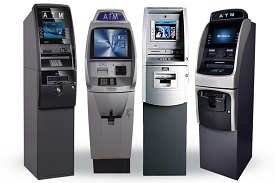 Automatic dispensers for money |
LSEEW28 | However, there are a number of reasons why it is still important to properly dispose of and recycle automatic dispensers for money. First, automatic dispensers for money can contain hazardous materials, such as lead and mercury. Second, automatic dispensers for money can contain personal information, such as credit card numbers and Social Security numbers. Third, automatic dispensers for money can be a source of e-waste, which is a major environmental problem. There are a number of ways to properly dispose of and recycle automatic dispensers for money. One way is to take them to a local recycling center. Another way is to contact the manufacturer of the automatic dispenser for money to see if they have a recycling program. It is important to properly dispose of and recycle automatic dispensers for money to protect the environment and to prevent the spread of personal information. Here are some of the ways to properly dispose of and recycle automatic dispensers for money:
It is important to note that the best way to dispose of an automatic dispenser for money will vary depending on the specific model and manufacturer. It is always best to consult with the manufacturer or a recycling expert to determine the best course of action. |
| 73 |  Automatic dispensers for hot or cold bottles or cans |
LSEEW26 | Extended Producer Responsibility (EPR) is a policy that shifts the responsibility for managing the end-of-life of a product from the government to the producer. In the case of automatic dispensers for hot or cold bottles or cans, this means that manufacturers and importers of automatic dispensers for hot or cold bottles or cans in India are responsible for collecting and recycling end-of-life automatic dispensers for hot or cold bottles or cans. There are a number of benefits to EPR for automatic dispensers for hot or cold bottles or cans. First, it helps to ensure that automatic dispensers for hot or cold bottles or cans are properly disposed of and recycled, which can help to protect the environment. Second, EPR can help to reduce the amount of waste that is sent to landfills. Third, EPR can help to create jobs in the recycling and reuse sector. To obtain EPR authorization for automatic dispensers for hot or cold bottles or cans in India, manufacturers and importers must meet certain requirements. These requirements include:
Once a manufacturer or importer has obtained EPR authorization, they are required to collect and recycle a certain percentage of end-of-life automatic dispensers for hot or cold bottles or cans. The percentage that must be collected and recycled varies depending on the type of automatic dispenser for hot or cold bottles or cans. EPR is an important policy that can help to protect the environment and create jobs. If you are a manufacturer or importer of automatic dispensers for hot or cold bottles or cans in India, I encourage you to learn more about EPR and how you can obtain EPR authorization. |
| 74 |  Automatic dispensers for solid products |
LSEEW27 | Automatic dispensers for solid products are covered under the Extended Producer Responsibility (EPR) framework in India. EPR is a policy that shifts the responsibility for managing the end-of-life of a product from the government to the producer. In the case of automatic dispensers for solid products, this means that manufacturers and importers of automatic dispensers for solid products in India are responsible for collecting and recycling end-of-life automatic dispensers for solid products. There are a number of benefits to EPR for automatic dispensers for solid products. First, it helps to ensure that automatic dispensers for solid products are properly disposed of and recycled, which can help to protect the environment. Second, EPR can help to reduce the amount of waste that is sent to landfills. Third, EPR can help to create jobs in the recycling and reuse sector. To obtain EPR authorization for automatic dispensers for solid products in India, manufacturers and importers must meet certain requirements. These requirements include:
Once a manufacturer or importer has obtained EPR authorization, they are required to collect and recycle a certain percentage of end-of-life automatic dispensers for solid products. The percentage that must be collected and recycled varies depending on the type of automatic dispenser for solid products. EPR is an important policy that can help to protect the environment and create jobs. If you are a manufacturer or importer of automatic dispensers for solid products in India, I encourage you to learn more about EPR and how you can obtain EPR authorization. |
| 75 |  Automatic dispensers for money |
LSEEW28 | However, there are a number of reasons why it is still important to properly dispose of and recycle automatic dispensers for money. First, automatic dispensers for money can contain hazardous materials, such as lead and mercury. Second, automatic dispensers for money can contain personal information, such as credit card numbers and Social Security numbers. Third, automatic dispensers for money can be a source of e-waste, which is a major environmental problem. There are a number of ways to properly dispose of and recycle automatic dispensers for money. One way is to take them to a local recycling center. Another way is to contact the manufacturer of the automatic dispenser for money to see if they have a recycling program. It is important to properly dispose of and recycle automatic dispensers for money to protect the environment and to prevent the spread of personal information. Here are some of the ways to properly dispose of and recycle automatic dispensers for money:
It is important to note that the best way to dispose of an automatic dispenser for money will vary depending on the specific model and manufacturer. It is always best to consult with the manufacturer or a recycling expert to determine the best course of action. |
| 76 | 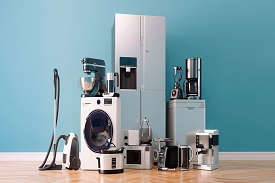 All appliances which deliver automatically all kinds of products |
LSEEW29 | Automatic dispensers for all kinds of products are covered under the Extended Producer Responsibility (EPR) framework in India. This means that manufacturers and importers of automatic dispensers for all kinds of products are responsible for collecting and recycling end-of-life automatic dispensers for all kinds of products. There are a number of benefits to EPR for automatic dispensers for all kinds of products. First, it helps to ensure that automatic dispensers for all kinds of products are properly disposed of and recycled, which can help to protect the environment. Second, EPR can help to reduce the amount of waste that is sent to landfills. Third, EPR can help to create jobs in the recycling and reuse sector. To obtain EPR authorization for automatic dispensers for all kinds of products in India, manufacturers and importers must meet certain requirements. These requirements include:
Once a manufacturer or importer has obtained EPR authorization, they are required to collect and recycle a certain percentage of end-of-life automatic dispensers for all kinds of products. The percentage that must be collected and recycled varies depending on the type of automatic dispenser for all kinds of products. EPR is an important policy that can help to protect the environment and create jobs. If you are a manufacturer or importer of automatic dispensers for all kinds of products in India, I encourage you to learn more about EPR and how you can obtain EPR authorization. |
| 77 |  Indoor air purifier |
LSEEW30 | Indoor air purifiers are not covered under the Extended Producer Responsibility (EPR) framework in India. This means that manufacturers and importers of indoor air purifiers are not responsible for collecting and recycling end-of-life indoor air purifiers. However, there are a number of reasons why it is still important to properly dispose of and recycle indoor air purifiers. First, indoor air purifiers can contain hazardous materials, such as lead and mercury. Second, indoor air purifiers can contain personal information, such as credit card numbers and Social Security numbers. Third, indoor air purifiers can be a source of e-waste, which is a major environmental problem. There are a number of ways to properly dispose of and recycle indoor air purifiers. One way is to take them to a local recycling center. Another way is to contact the manufacturer of the indoor air purifier to see if they have a recycling program. It is important to properly dispose of and recycle indoor air purifiers to protect the environment and to prevent the spread of personal information. Here are some of the ways to properly dispose of and recycle indoor air purifiers:
It is important to note that the best way to dispose of an indoor air purifier will vary depending on the specific model and manufacturer. It is always best to consult with the manufacturer or a recycling expert to determine the best course of action. If you are a manufacturer or importer of indoor air purifiers in India, you may want to consider voluntarily participating in an EPR program. This will help to ensure that your products are properly disposed of and recycled, and it will also help to protect the environment. There are a number of EPR programs available for indoor air purifiers in India. Some of these programs are government-run, while others are run by private companies. The best way to find out about EPR programs in India is to contact the Central Pollution Control Board (CPCB). |
| 78 | 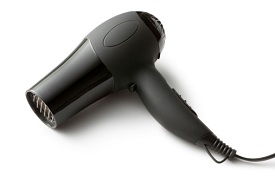 Hair dryer |
LSEEW31 | There are a number of benefits to EPR for hair dryers. First, it helps to ensure that hair dryers are properly disposed of and recycled, which can help to protect the environment. Second, EPR can help to reduce the amount of waste that is sent to landfills. Third, EPR can help to create jobs in the recycling and reuse sector. To obtain EPR authorization for hair dryers in India, manufacturers and importers must meet certain requirements. These requirements include:
Once a manufacturer or importer has obtained EPR authorization, they are required to collect and recycle a certain percentage of end-of-life hair dryers. The percentage that must be collected and recycled varies depending on the type of hair dryer. EPR is an important policy that can help to protect the environment and create jobs. If you are a manufacturer or importer of hair dryers in India, I encourage you to learn more about EPR and how you can obtain EPR authorization. |
| 79 |  Electric shaver |
LSEEW32 | Electric shavers are covered under the Extended Producer Responsibility (EPR) framework in India. This means that manufacturers and importers of electric shavers are responsible for collecting and recycling end-of-life electric shavers. There are a number of benefits to EPR for electric shavers. First, it helps to ensure that electric shavers are properly disposed of and recycled, which can help to protect the environment. Second, EPR can help to reduce the amount of waste that is sent to landfills. Third, EPR can help to create jobs in the recycling and reuse sector. To obtain EPR authorization for electric shavers in India, manufacturers and importers must meet certain requirements. These requirements include:
Once a manufacturer or importer has obtained EPR authorization, they are required to collect and recycle a certain percentage of end-of-life electric shavers. The percentage that must be collected and recycled varies depending on the type of electric shaver. EPR is an important policy that can help to protect the environment and create jobs. If you are a manufacturer or importer of electric shavers in India, I encourage you to learn more about EPR and how you can obtain EPR authorization. |
| 80 |  Electric kettle |
LSEEW33 | EPR is an important policy that can help to protect the environment and create jobs. If you are a manufacturer or importer of electric kettles in India, I encourage you to learn more about EPR and how you can obtain EPR authorization. Here are some of the steps involved in the EPR Authorization process for electric kettles: 1. Identify the applicable regulations. The first step is to identify the applicable regulations for electric kettles in India. The Central Pollution Control Board (CPCB) is the government agency responsible for regulating e-waste in India. The CPCB has issued a number of regulations that apply to electric kettles, including:
2. Gather the required documentation. Once you have identified the applicable regulations, you will need to gather the required documentation. The documentation that you will need to submit for EPR Authorization for electric kettles includes:
3. Submit the application. Once you have gathered the required documentation, you can submit your application for EPR Authorization to the CPCB. The application can be submitted online or by mail. 4. Pay the application fee. The CPCB charges an application fee for EPR Authorization. The application fee is currently INR 10,000. 5. Wait for the decision. The CPCB will review your application and make a decision within 30 days. If your application is approved, you will be issued an EPR Authorization Certificate. 6.Renew the certificate. The EPR Authorization Certificate is valid for 5 years. After 5 years, you will need to renew the certificate by submitting an application to the CPCB. The EPR Authorization process is an important step in ensuring the safety and quality of electric kettles that is sold in India. The EPR Authorization helps to protect consumers from counterfeit and substandard products and ensures that these products meet the required safety and quality standards. |
| 81 |  Electronic display panels / board / visual display unit |
LSEEW34 | Yes, electronic display panels / boards / visual display units (EDPVDUs) are covered under the Extended Producer Responsibility (EPR) framework in India. This means that manufacturers and importers of EDPVDUs are responsible for collecting and recycling end-of-life EDPVDUs. The Central Pollution Control Board (CPCB) is the government agency responsible for regulating e-waste in India. The CPCB has set up a system for EPR for EDPVDUs, which is based on the following principles:
The CPCB has set up a number of collection centers for EDPVDUs across India. Consumers can take their end-of-life EDPVDUs to these collection centers for free. The CPCB also has a number of recycling facilities for EDPVDUs. These recycling facilities are used to recover valuable materials from end-of-life EDPVDUs, such as lead, mercury, and precious metals. If you are a manufacturer or importer of EDPVDUs in India, you are required to comply with the EPR framework. You can find more information about the EPR framework for EDPVDUs on the CPCB website. Here are some of the benefits of EPR for EDPVDUs:
|
| 82 | 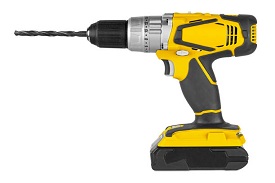 Drills |
EPR stands for Extended Producer Responsibility. It is a policy that aims to make producers responsible for the environmental impact of their products, even after they have been sold. In the context of drills, EPR requires manufacturers and importers to set up a system for collecting, transporting, and recycling used drills. There are a number of benefits to EPR. First, it helps to reduce the amount of e-waste that ends up in landfills. Second, it helps to conserve resources, as used drills can be recycled and reused. Third, it helps to protect the environment, as the recycling process can prevent harmful chemicals from entering the environment. Here are some of the benefits of EPR authorization for drills:
If you are a manufacturer or importer of drills, you should consider obtaining EPR authorization. EPR is a valuable tool that can help you to reduce your environmental impact, conserve resources, improve safety, and improve your public image. |
|
| 83 | 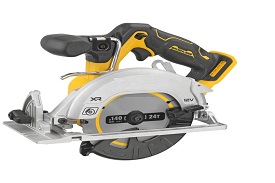 Saws |
EETW2 | Extended Producer Responsibility (EPR) is a policy that aims to make producers responsible for the environmental impact of their products, even after they have been sold. In the context of saws, EPR requires manufacturers and importers to set up a system for collecting, transporting, and recycling used saws. There are a number of benefits to EPR. First, it helps to reduce the amount of e-waste that ends up in landfills. Second, it helps to conserve resources, as used saws can be recycled and reused. Third, it helps to protect the environment, as the recycling process can prevent harmful chemicals from entering the environment. Here are some of the benefits of EPR authorization for saws:
If you are a manufacturer or importer of saws, you should consider obtaining EPR authorization. EPR is a valuable tool that can help you to reduce your environmental impact, conserve resources, improve safety, and improve your public image. |
| 84 |  Sewing Machines |
EETW3 | EPR stands for Extended Producer Responsibility. It is a policy that requires manufacturers and importers of electronic and electrical equipment (EEE) to take responsibility for the environmental impact of their products at the end of their life. This includes collecting, recycling, and disposing of e-waste in an environmentally sound manner. Sewing machines are coming on the list of EEE products that require EPR authorization in India. This means that manufacturers and importers of sewing machines must obtain EPR authorization from the Central Pollution Control Board (CPCB) before they can sell their products in India. To obtain EPR authorization, manufacturers and importers must submit an application to the CPCB. The application must include information about the company, the products it manufactures or imports, and its plan for managing e-waste. The CPCB will review the application and may require additional information or documentation. Once the application is approved, the company will be issued an EPR authorization certificate. The EPR authorization certificate is valid for a period of five years. After five years, the company must renew its EPR authorization by submitting a new application to the CPCB. The EPR authorization system is designed to ensure that e-waste is managed in an environmentally sound manner. By requiring manufacturers and importers to take responsibility for the environmental impact of their products, the EPR system helps to protect the environment and human health. |
| 85 | Equipment for processing of wood, metal and other materials like milling, grinding, sawing, cutting, shearing, drilling, punching, folding etc |
EETW4 | To obtain EPR (Environmental Protection and Regulations) authorization for equipment used in processing wood, metal, and other materials such as milling, grinding, sawing, cutting, shearing, drilling, punching, folding, etc., you will typically need to follow certain steps and comply with relevant environmental regulations. While I can provide general guidance, it's important to consult with local authorities or environmental agencies for specific requirements in your jurisdiction, as regulations may vary.
|
| 86 |  Tools for riveting, nailing or screwing or removing rivets, nails, screws or similar uses |
EETW5 | If you are a manufacturer or importer of tools for riveting, nailing, or screwing or removing rivets, nails, screws or similar uses, you should contact the CPCB to learn more about EPR requirements and how to obtain EPR authorization. Here are the steps on how to obtain EPR authorization for tools for riveting, nailing, or screwing or removing rivets, nails, screws or similar uses: 1. Visit the CPCB website and download the EPR application form. 2. Fill out the application form and submit it to the CPCB along with the required documents. 3. The CPCB will review your application and approve or reject it within 30 days. 4.If your application is approved, you will be issued an EPR authorization certificate. The EPR authorization certificate is valid for a period of five years. After five years, you will need to renew your EPR authorization certificate. The EPR regulations are a complex set of rules and regulations. If you have any questions about the EPR regulations, you should contact the CPCB for assistance. |
| 87 | 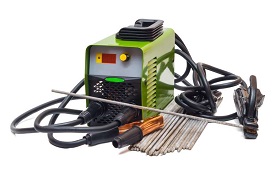 Tools for welding, soldering, or similar use |
EETW6 | EPR authorization is required for tools for welding, soldering, or similar use. This is because these tools are considered to be electrical and electronic equipment (EEE) and are therefore subject to the EPR regulations in India. The EPR regulations require manufacturers and importers of EEE to take responsibility for the environmental impact of their products, even after they have been sold. This includes the collection and recycling of end-of-life products, as well as the management of any hazardous materials that may be contained in the products. If you are a manufacturer or importer of tools for welding, soldering, or similar use, you should contact the CPCB to learn more about EPR requirements and how to obtain EPR authorization. Here are the steps on how to obtain EPR authorization for tools for welding, soldering, or similar use: 1. Visit the CPCB website and download the EPR application form. 2. Fill out the application form and submit it to the CPCB along with the required documents. 3. The CPCB will review your application and approve or reject it within 30 days. 4. If your application is approved, you will be issued an EPR authorization certificate. The EPR authorization certificate is valid for a period of five years. After five years, you will need to renew your EPR authorization certificate. The EPR regulations are a complex set of rules and regulations. If you have any questions about the EPR regulations, you should contact the CPCB for assistance. |
| 88 | 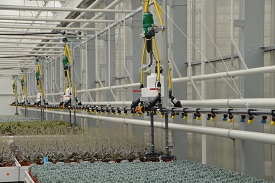 Equipment for spraying, spreading, dispersing or other treatment of liquid or gaseous substance by other means |
EETW7 | EPR authorization is required for equipment for spraying, spreading, dispersing or other treatment of liquid or gaseous substance by other means. This is because this equipment are considered to be electrical and electronic equipment (EEE) and are therefore subject to the EPR regulations in India. The EPR regulations require manufacturers and importers of EEE to take responsibility for the environmental impact of their products, even after they have been sold. This includes the collection and recycling of end-of-life products, as well as the management of any hazardous materials that may be contained in the products. In order to comply with the EPR regulations, manufacturers and importers of equipment for spraying, spreading, dispersing or other treatment of liquid or gaseous substance by other means must obtain EPR authorization from the Central Pollution Control Board (CPCB). EPR authorization can be obtained by submitting a number of documents to the CPCB, including:
Once EPR authorization has been obtained, manufacturers and importers are required to collect and recycle a certain percentage of end-of-life products. The percentage of products that must be collected and recycled varies depending on the type of product. The EPR regulations are an important environmental policy that helps to reduce the amount of waste that is sent to landfills. It also helps to protect human health by preventing the release of hazardous materials into the environment. |
| 89 | 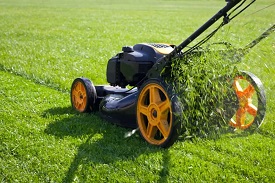 Tools for mowing or other gardening activities |
EETW8 | EPR authorization is required for tools for mowing or other gardening activities. This is because these tools are considered to be electrical and electronic equipment (EEE) and are therefore subject to the EPR regulations in India. The EPR regulations require manufacturers and importers of EEE to take responsibility for the environmental impact of their products, even after they have been sold. This includes the collection and recycling of end-of-life products, as well as the management of any hazardous materials that may be contained in the products. In order to comply with the EPR regulations, manufacturers and importers of tools for mowing or other gardening activities must obtain EPR authorization from the Central Pollution Control Board (CPCB). EPR authorization can be obtained by submitting a number of documents to the CPCB, including:
Once EPR authorization has been obtained, manufacturers and importers are required to collect and recycle a certain percentage of end-of-life products. The percentage of products that must be collected and recycled varies depending on the type of product. The EPR regulations are an important environmental policy that helps to reduce the amount of waste that is sent to landfills. It also helps to protect human health by preventing the release of hazardous materials into the environment. |
| 90 |  Electrical trains or car racing sets |
TLSEW1 | EPR authorization is required for electrical trains or car racing sets. This is because these sets are considered to be electrical and electronic equipment (EEE) and are therefore subject to the EPR regulations in India. The EPR regulations require manufacturers and importers of EEE to take responsibility for the environmental impact of their products, even after they have been sold. This includes the collection and recycling of end-of-life products, as well as the management of any hazardous materials that may be contained in the products. In order to comply with the EPR regulations, manufacturers and importers of electrical trains or car racing sets must obtain EPR authorization from the Central Pollution Control Board (CPCB). EPR authorization can be obtained by submitting a number of documents to the CPCB, including:
Once EPR authorization has been obtained, manufacturers and importers are required to collect and recycle a certain percentage of end-of-life products. The percentage of products that must be collected and recycled varies depending on the type of product. The EPR regulations are an important environmental policy that helps to reduce the amount of waste that is sent to landfills. It also helps to protect human health by preventing the release of hazardous materials into the environment. |
| 91 |  Hand-held video games consoles |
TLSEW2 | If you are a manufacturer or importer of handheld video games consoles, you should contact the CPCB to learn more about EPR requirements and how to obtain EPR authorization. Here are the steps on how to obtain EPR authorization for handheld video games consoles: 1. Visit the CPCB website and download the EPR application form. 2. Fill out the application form and submit it to the CPCB along with the required documents. 3. The CPCB will review your application and approve or reject it within 30 days. 4. If your application is approved, you will be issued an EPR authorization certificate. The EPR authorization certificate is valid for a period of five years. After five years, you will need to renew your EPR authorization certificate. The EPR regulations are a complex set of rules and regulations. If you have any questions about the EPR regulations, you should contact the CPCB for assistance. Here are some of the documents that may be required for EPR authorization:
The CPCB may also require additional information or documentation depending on the specific product. The EPR regulations are a vital part of India's efforts to protect the environment and promote sustainable development. By complying with the EPR regulations, manufacturers and importers can help to ensure that end-of-life products are properly managed and recycled, and that hazardous materials are properly disposed of. |
| 92 |  Video games |
TLSEW3 | The EPR authorization certificate is valid for a period of five years. After five years, you will need to renew your EPR authorization certificate. The EPR regulations are a complex set of rules and regulations. If you have any questions about the EPR regulations, you should contact the CPCB for assistance. The EPR regulations are a vital part of India's efforts to protect the environment and promote sustainable development. By complying with the EPR regulations, manufacturers and importers can help to ensure that end-of-life products are properly managed and recycled, and that hazardous materials are properly disposed of. Here are some of the ways to recycle video games:
By recycling your video games, you can help to protect the environment and conserve natural resources. |
| 93 |  Computers for biking, diving, running, rowing, etc |
TLSEW4 | EPR Authorization is not required for computers for biking, diving, running, rowing, etc. This is because these computers are not considered to be electrical and electronic equipment (EEE) and are therefore not subject to the EPR regulations in India. The EPR regulations only apply to EEE that are used for commercial or industrial purposes. Computers for biking, diving, running, rowing, etc. are typically used for personal purposes and are therefore not subject to the EPR regulations. However, it is still important to recycle these computers when they are no longer needed. You can take them to a local electronics recycling center or mail them to a recycling company. You can also donate them to a charity that refurbishes and donates used electronics. By recycling these computers, you can help to protect the environment and conserve natural resources. |
| 94 | 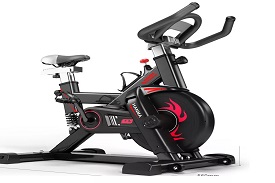 Sports equipment with electric or electronic components |
TLSEW5 | If you are a manufacturer or importer of sports equipment with electric or electronic components, you should contact the CPCB to learn more about EPR requirements and how to obtain EPR authorization. Here are the steps on how to obtain EPR authorization for sports equipment with electric or electronic components: 1. Visit the CPCB website and download the EPR application form. 2. Fill out the application form and submit it to the CPCB along with the required documents. 3. The CPCB will review your application and approve or reject it within 30 days. 4. If your application is approved, you will be issued an EPR authorization certificate. The EPR authorization certificate is valid for a period of five years. After five years, you will need to renew your EPR authorization certificate. The EPR regulations are a complex set of rules and regulations. If you have any questions about the EPR regulations, you should contact the CPCB for assistance. |
| 95 |  Coin slot machines |
TLSEW6 | EPR Authorization is required for coin slot machines. This is because coin slot machines are considered to be electrical and electronic equipment (EEE) and are therefore subject to the EPR regulations in India. The EPR regulations require manufacturers and importers of EEE to take responsibility for the environmental impact of their products, even after they have been sold. This includes the collection and recycling of end-of-life products, as well as the management of any hazardous materials that may be contained in the products. In order to comply with the EPR regulations, manufacturers and importers of coin slot machines must obtain EPR authorization from the Central Pollution Control Board (CPCB). EPR authorization can be obtained by submitting a number of documents to the CPCB, including:
Once EPR authorization has been obtained, manufacturers and importers are required to collect and recycle a certain percentage of end-of-life products. The percentage of products that must be collected and recycled varies depending on the type of product. The EPR regulations are an important environmental policy that helps to reduce the amount of waste that is sent to landfills. It also helps to protect human health by preventing the release of hazardous materials into the environment. |
| 96 |  Radiotherapy equipment and accessories |
MDW1 | If you are a manufacturer or importer of Radiotherapy equipment and accessories, you should contact the CPCB to learn more about EPR requirements and how to obtain EPR authorization. Here are the steps on how to obtain EPR authorization for Radiotherapy equipment and accessories: 1. Visit the CPCB website and download the EPR application form. 2. Fill out the application form and submit it to the CPCB along with the required documents. 3. The CPCB will review your application and approve or reject it within 30 days. 4. If your application is approved, you will be issued an EPR authorization certificate. The EPR authorization certificate is valid for a period of five years. After five years, you will need to renew your EPR authorization certificate. The EPR regulations are a vital part of India's efforts to protect the environment and promote sustainable development. By complying with the EPR regulations, manufacturers and importers can help to ensure that end-of-life products are properly managed and recycled, and that hazardous materials are properly disposed of. However, there are some exemptions to the EPR regulations for Radiotherapy equipment and accessories. These exemptions include:
If you are unsure whether your Radiotherapy equipment and accessories are subject to the EPR regulations, you should contact the CPCB for clarification. |
| 97 | 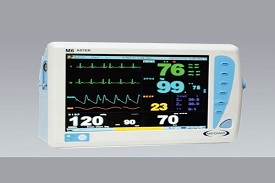 Cardiology equipment and accessories |
MDW2 | To obtain EPR (Environmental Protection and Regulations) authorization for cardiology equipment and accessories, you would typically need to follow specific steps and comply with relevant environmental regulations. Here is a general guide to help you navigate the process:
Energy Efficiency: Promote energy efficiency in your cardiology equipment by designing energy-saving features and optimizing power consumption. Comply with energy efficiency standards and labeling requirements, where applicable, to minimize energy usage. |
| 98 |  Dialysis equipment and accessories |
MDW3 | EPR Authorization is required for Dialysis equipment and accessories. This is because Dialysis equipment and accessories are considered to be electrical and electronic equipment (EEE) and are therefore subject to the EPR regulations in India. The EPR regulations require manufacturers and importers of EEE to take responsibility for the environmental impact of their products, even after they have been sold. This includes the collection and recycling of end-of-life products, as well as the management of any hazardous materials that may be contained in the products. In order to comply with the EPR regulations, manufacturers and importers of Dialysis equipment and accessories must obtain EPR authorization from the Central Pollution Control Board (CPCB). EPR authorization can be obtained by submitting a number of documents to the CPCB, including:
Once EPR authorization has been obtained, manufacturers and importers are required to collect and recycle a certain percentage of end-of-life products. The percentage of products that must be collected and recycled varies depending on the type of product. The EPR regulations are an important environmental policy that helps to reduce the amount of waste that is sent to landfills. It also helps to protect human health by preventing the release of hazardous materials into the environment. |
| 99 |  Pulmonary ventilators and accessories |
MDW4 | To obtain EPR (Environmental Protection and Regulations) authorization for pulmonary ventilators and accessories, you would typically need to follow specific steps and comply with relevant environmental regulations. Here is a general guide to help you navigate the process: 1. Research Applicable Regulations: Identify the environmental regulations and guidelines that apply to your location and the specific pulmonary ventilators and accessories you are using or manufacturing. These regulations may include waste management, hazardous substance restrictions, and proper disposal of electronic equipment. 2. Hazardous Substances: Ensure that your pulmonary ventilators and accessories comply with regulations regarding hazardous substances. Adhere to restrictions on the use of substances such as lead, mercury, cadmium, and certain flame retardants. Comply with labeling requirements and provide information to users about the proper disposal of equipment. 3. Waste Management: Develop a comprehensive waste management plan to handle any waste generated by your pulmonary ventilators and accessories. This may include proper disposal of electronic waste, recycling options for applicable materials, and appropriate handling of any hazardous substances produced. Comply with local regulations regarding storage, handling, and disposal of waste materials. 4. Recycling and Disposal: Implement proper recycling and disposal practices for electronic equipment at the end of its lifecycle. Collaborate with authorized recycling facilities or engage in producer responsibility programs to ensure the proper management of electronic waste generated by pulmonary ventilators and accessories. Energy Efficiency: Promote energy efficiency in your pulmonary ventilators and accessories by designing energy-saving features and optimizing power consumption. Comply with energy efficiency standards and labeling requirements, where applicable, to minimize energy usage. |
| 100 |  Nuclear Medicine Equipment and accessories |
MDW5 | If you are a manufacturer or importer of Nuclear Medicine Equipment and accessories, you should contact the CPCB to learn more about EPR requirements and how to obtain EPR authorization. Here are the steps on how to obtain EPR authorization for Nuclear Medicine Equipment and accessories: 1. Visit the CPCB website and download the EPR application form. 2. Fill out the application form and submit it to the CPCB along with the required documents. 3. The CPCB will review your application and approve or reject it within 30 days. 4. If your application is approved, you will be issued an EPR authorization certificate. The EPR authorization certificate is valid for a period of five years. After five years, you will need to renew your EPR authorization certificate. The EPR regulations are a complex set of rules and regulations. If you have any questions about the EPR regulations, you should contact the CPCB for assistance. Here are some of the documents that may be required for EPR authorization:
The CPCB may also require additional information or documentation depending on the specific product. The EPR regulations are a vital part of India's efforts to protect the environment and promote sustainable development. By complying with the EPR regulations, manufacturers and importers can help to ensure that end-of-life products are properly managed and recycled, and that hazardous materials are properly disposed. |
| 101 |  Laboratory equipment for in vitro diagnosis and accessories |
MDW6 | To obtain EPR (Environmental Protection and Regulations) authorization for laboratory equipment for in vitro diagnosis and accessories, you would typically need to follow specific steps and comply with relevant environmental regulations. Here is a general guide to help you navigate the process: 1. Research Applicable Regulations: Identify the environmental regulations and guidelines that apply to your location and the specific laboratory equipment for in vitro diagnosis and accessories you are using or manufacturing. These regulations may include waste management, hazardous substance restrictions, and proper disposal of electronic equipment. 2. Hazardous Substances: Ensure that your laboratory equipment and accessories comply with regulations regarding hazardous substances. Adhere to restrictions on the use of substances such as lead, mercury, cadmium, and certain flame retardants. Comply with labeling requirements and provide information to users about the proper disposal of equipment. 3. Waste Management: Develop a comprehensive waste management plan to handle any waste generated by your laboratory equipment and accessories. This may include proper disposal of electronic waste, recycling options for applicable materials, and appropriate handling of any hazardous substances produced. Comply with local regulations regarding storage, handling, and disposal of waste materials. 4. Recycling and Disposal: Implement proper recycling and disposal practices for electronic equipment at the end of its lifecycle. Collaborate with authorized recycling facilities or engage in producer responsibility programs to ensure the proper management of electronic waste generated by laboratory equipment and accessories. Energy Efficiency: Promote energy efficiency in your laboratory equipment and accessories by designing energy-saving features and optimizing power consumption. Comply with energy efficiency standards and labeling requirements, where applicable, to minimize energy usage. |
| 102 | 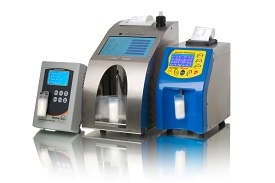 Analyzers and accessories |
MDW7 | EPR Authorization is required for analyzers and accessories. This is because analyzers and accessories are considered to be electrical and electronic equipment (EEE) and are therefore subject to the EPR regulations in India. The EPR regulations require manufacturers and importers of EEE to take responsibility for the environmental impact of their products, even after they have been sold. This includes the collection and recycling of end-of-life products, as well as the management of any hazardous materials that may be contained in the products. In order to comply with the EPR regulations, manufacturers and importers of analyzers and accessories must obtain EPR authorization from the Central Pollution Control Board (CPCB). EPR authorization can be obtained by submitting a number of documents to the CPCB, including:
Once EPR authorization has been obtained, manufacturers and importers are required to collect and recycle a certain percentage of end-of-life products. The percentage of products that must be collected and recycled varies depending on the type of product. |
| 103 | -Positron-Emission-Tomography-(PET)-Scanner-Computed-Tomography-(CT)-Scanner-&-Ultrasound-Equipment-along-with-accessories-by-brand-liaison.jpg) MRI, PET scanner, CT scanner, & Ultrasound Equipment along with accessories |
MDW8 | EPR stands for Extended Producer Responsibility. It is a policy that requires producers to take responsibility for the environmental impact of their products, even after they have been sold. In India, EPR is regulated by the Bureau of Indian Standards (BIS). MRI, PET Scanner, CT Scanner, & Ultrasound Equipment along with accessories are all considered to be E-waste, or electronic waste. E-waste is a major environmental problem, as it contains hazardous materials that can pollute the air, water, and soil. EPR helps to reduce the environmental impact of E-waste by requiring producers to collect and recycle it. To obtain EPR authorization for MRI, PET Scanner, CT Scanner, & Ultrasound Equipment along with accessories, manufacturers must meet certain requirements. These requirements include:
The EPR plan must include a system for collecting and recycling E-waste. The plan must also include a system for tracking the E-waste that is collected and recycled. Once a manufacturer has obtained EPR authorization, they are responsible for collecting and recycling all E-waste from their products. This includes E-waste that is generated by consumers, as well as E-waste that is generated by businesses. EPR is an important tool for protecting the environment from E-waste. By requiring producers to take responsibility for the environmental impact of their products, EPR helps to reduce the amount of E-waste that is generated and helps to ensure that it is recycled properly. |
| 104 | 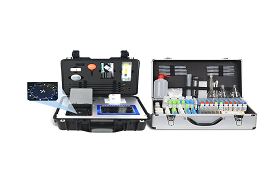 Fertilization tests equipment and accessories |
MDW9 | EPR stands for Extended Producer Responsibility. It is a policy that requires producers to take responsibility for the environmental impact of their products, even after they have been sold. In India, EPR is regulated by the Bureau of Indian Standards (BIS). Fertilization tests equipment and accessories are considered to be E-waste, or electronic waste. E-waste is a major environmental problem, as it contains hazardous materials that can pollute the air, water, and soil. EPR helps to reduce the environmental impact of E-waste by requiring producers to collect and recycle it. To obtain EPR authorization for fertilization tests equipment and accessories, manufacturers must meet certain requirements. These requirements include:
The EPR plan must include a system for collecting and recycling E-waste. The plan must also include a system for tracking the E-waste that is collected and recycled. Once a manufacturer has obtained EPR authorization, they are responsible for collecting and recycling all E-waste from their products. This includes E-waste that is generated by consumers, as well as E-waste that is generated by businesses. EPR is an important tool for protecting the environment from E-waste. By requiring producers to take responsibility for the environmental impact of their products, EPR helps to reduce the amount of E-waste that is generated and helps to ensure that it is recycled properly. |
| 105 |  Other electric appliances used for treating illness sickness, infection, injury, trauma, abuse etc and their accessories |
MDW10 | To obtain EPR (Environmental Protection and Regulations) authorization for other electric appliances used for treating illness, sickness, infection, injury, trauma, abuse, etc., and their accessories, you would typically need to follow specific steps and comply with relevant environmental regulations. Here is a general guide to help you navigate the process: 1. Research Applicable Regulations: Identify the environmental regulations and guidelines that apply to your location and the specific electric appliances used for treating various conditions and their accessories. These regulations may include waste management, hazardous substance restrictions, and proper disposal of electronic equipment. 2. Hazardous Substances: Ensure that your electric appliances and accessories comply with regulations regarding hazardous substances. Adhere to restrictions on the use of substances such as lead, mercury, cadmium, and certain flame retardants. Comply with labeling requirements and provide information to users about the proper disposal of equipment. 3. Waste Management: Develop a comprehensive waste management plan to handle any waste generated by your electric appliances and accessories. This may include proper disposal of electronic waste, recycling options for applicable materials, and appropriate handling of any hazardous substances produced. Comply with local regulations regarding storage, handling, and disposal of waste materials. 4. Recycling and Disposal: Implement proper recycling and disposal practices for electronic equipment at the end of its lifecycle. Collaborate with authorized recycling facilities or engage in producer responsibility programs to ensure the proper management of electronic waste generated by the electric appliances and accessories. Energy Efficiency: Promote energy efficiency in your electric appliances and accessories by designing energy-saving features and optimizing power consumption. Comply with energy efficiency standards and labeling requirements, where applicable, to minimize energy usage. |
| 106 |  Gas analyzer |
LIW1 | EPR stands for Extended Producer Responsibility. It is a regulatory framework that requires manufacturers and importers of certain products to take responsibility for the environmental impact of those products at the end of their life. In India, EPR is regulated by the Bureau of Indian Standards (BIS). Gas analyzers are considered to be electrical and electronic equipment (EEE) and are therefore subject to EPR requirements. To obtain EPR authorization for a gas analyzer, manufacturers and importers must submit an application to BIS. The application must include information on the following:
BIS will review the application and may require additional information or documentation. If the application is approved, BIS will issue an EPR certificate. The EPR certificate is valid for a period of five years. After five years, the manufacturer or importer must renew the certificate by submitting a new application to BIS. The EPR requirements are designed to ensure that e-waste is managed in an environmentally sound manner. By requiring manufacturers and importers to take responsibility for e-waste, EPR helps to reduce the environmental impact of these products. |
| 107 | 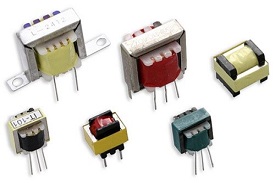 Equipment having electrical and electronic components |
LIW2 | EPR Authorization for equipment having electrical and electronic components is a regulatory requirement in India that aims to ensure the environmentally sound management of e-waste. The EPR framework requires producers and importers of EEE to take responsibility for the collection, recycling, and disposal of e-waste generated by their products. To obtain EPR authorization, producers and importers must submit an application to the Central Pollution Control Board (CPCB). The application must include information on the following:
The CPCB will review the application and may require additional information or documentation. If the application is approved, the CPCB will issue an EPR certificate. The EPR certificate is valid for a period of five years. After five years, the producer or importer must renew the certificate by submitting a new application to the CPCB. The EPR requirements are designed to ensure that e-waste is managed in an environmentally sound manner. By requiring producers and importers to take responsibility for e-waste, EPR helps to reduce the environmental impact of these products. |